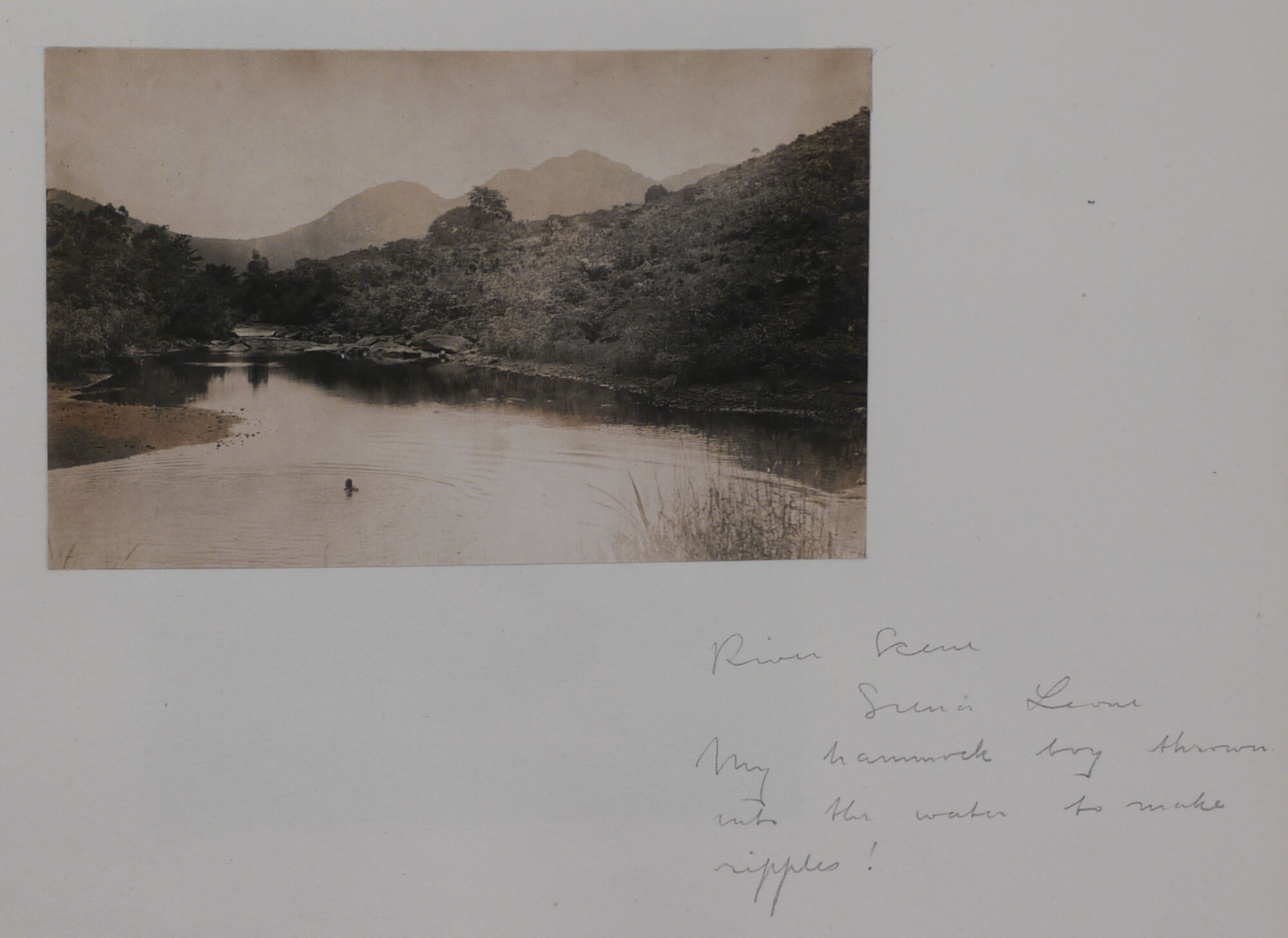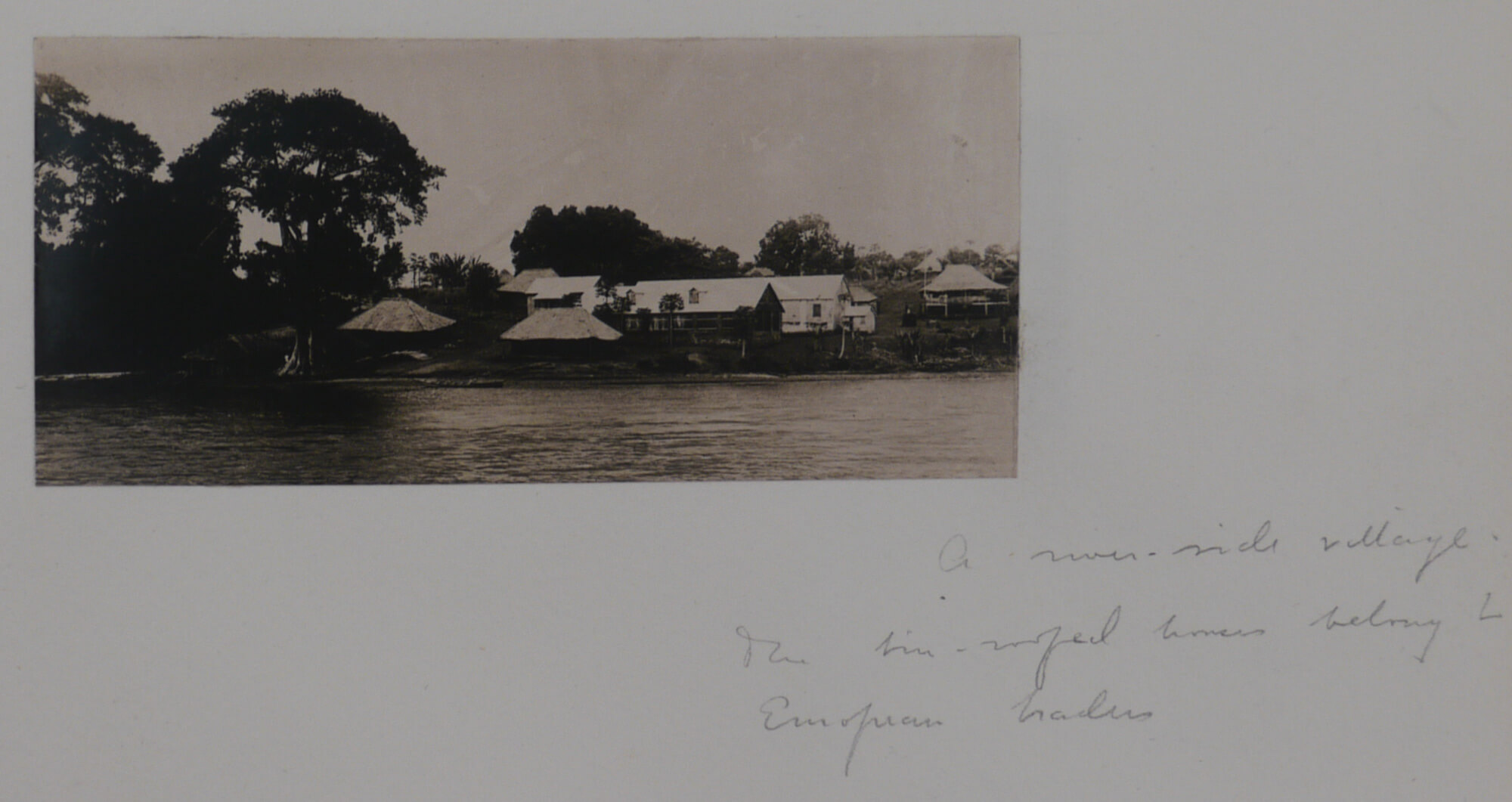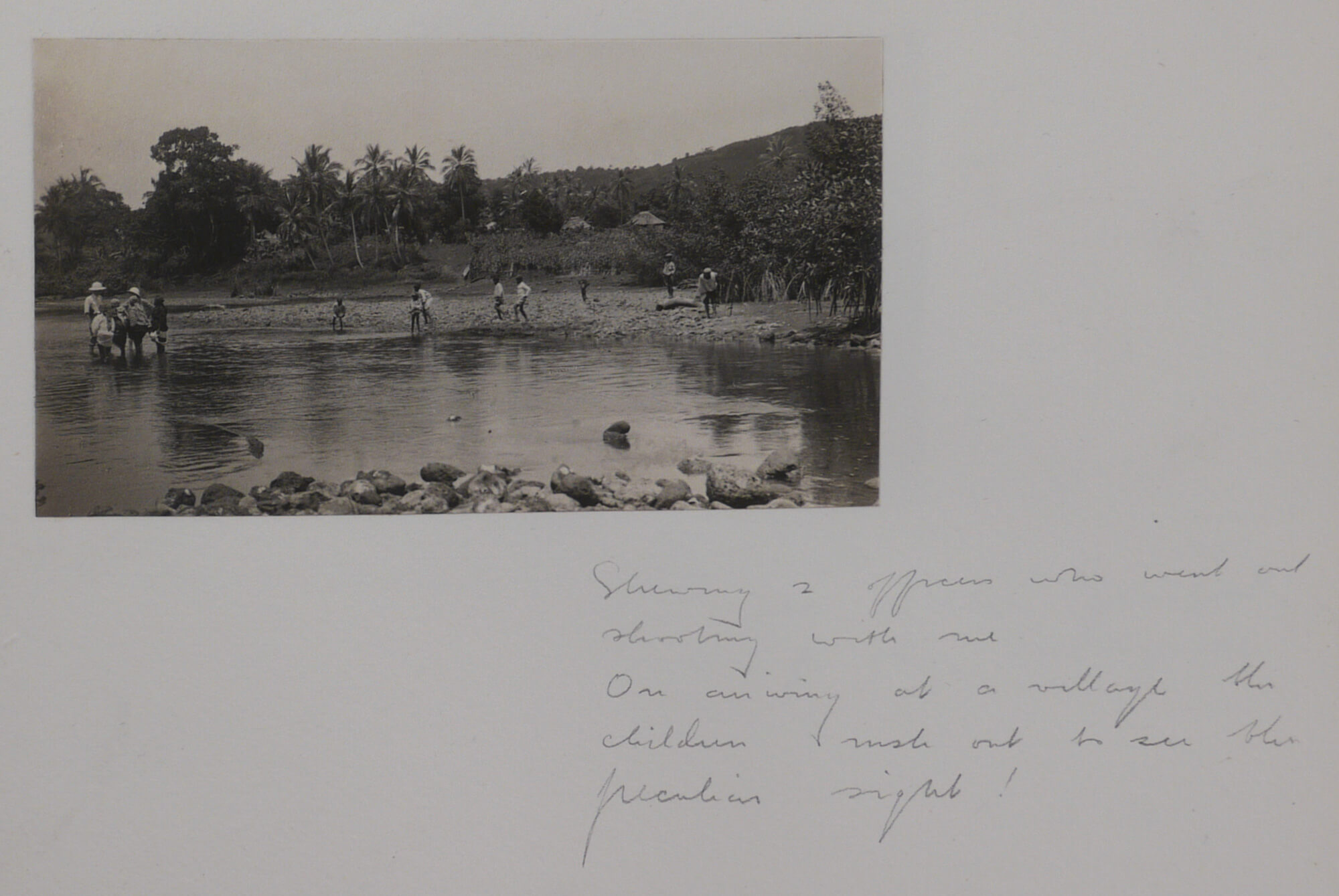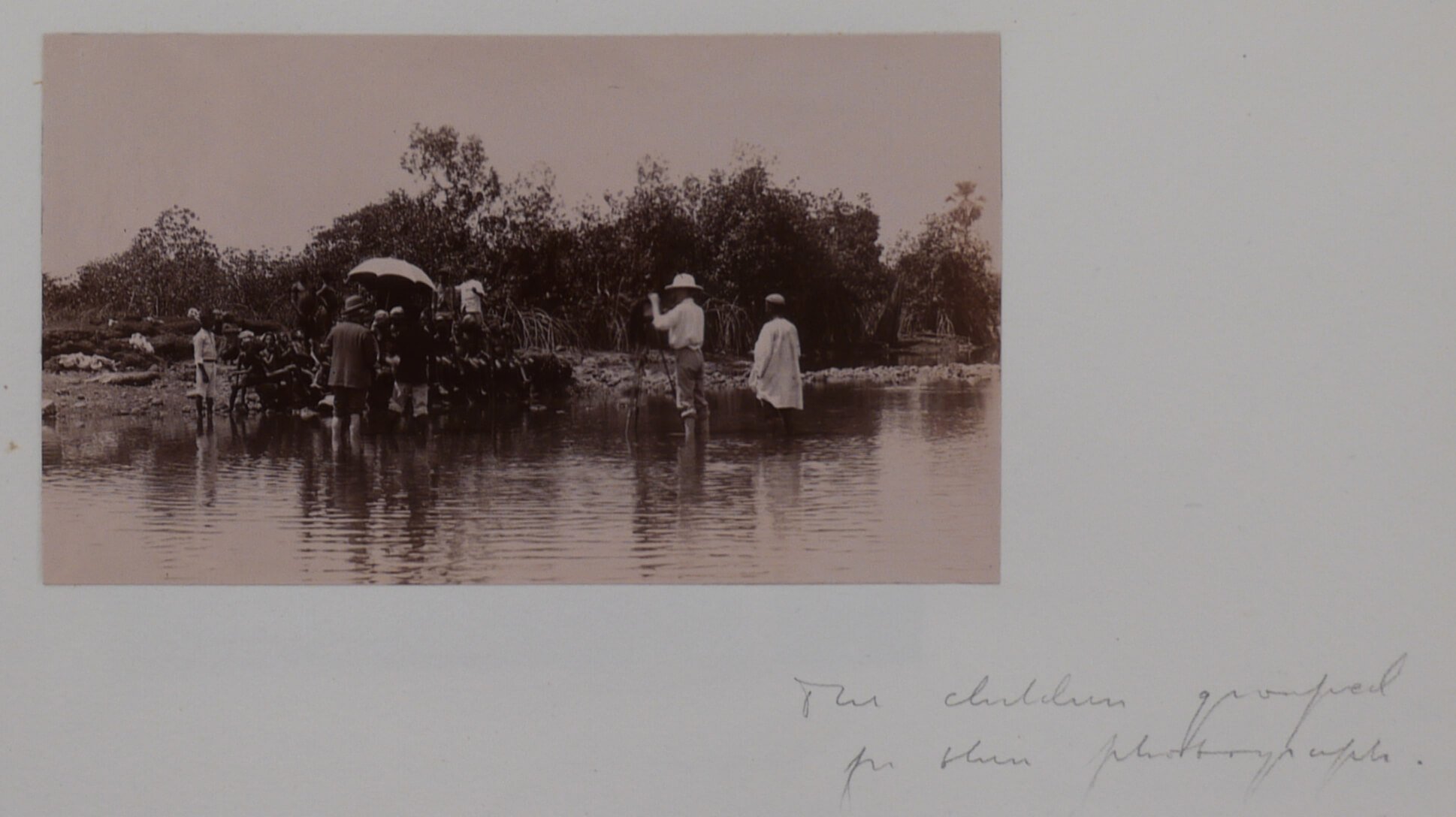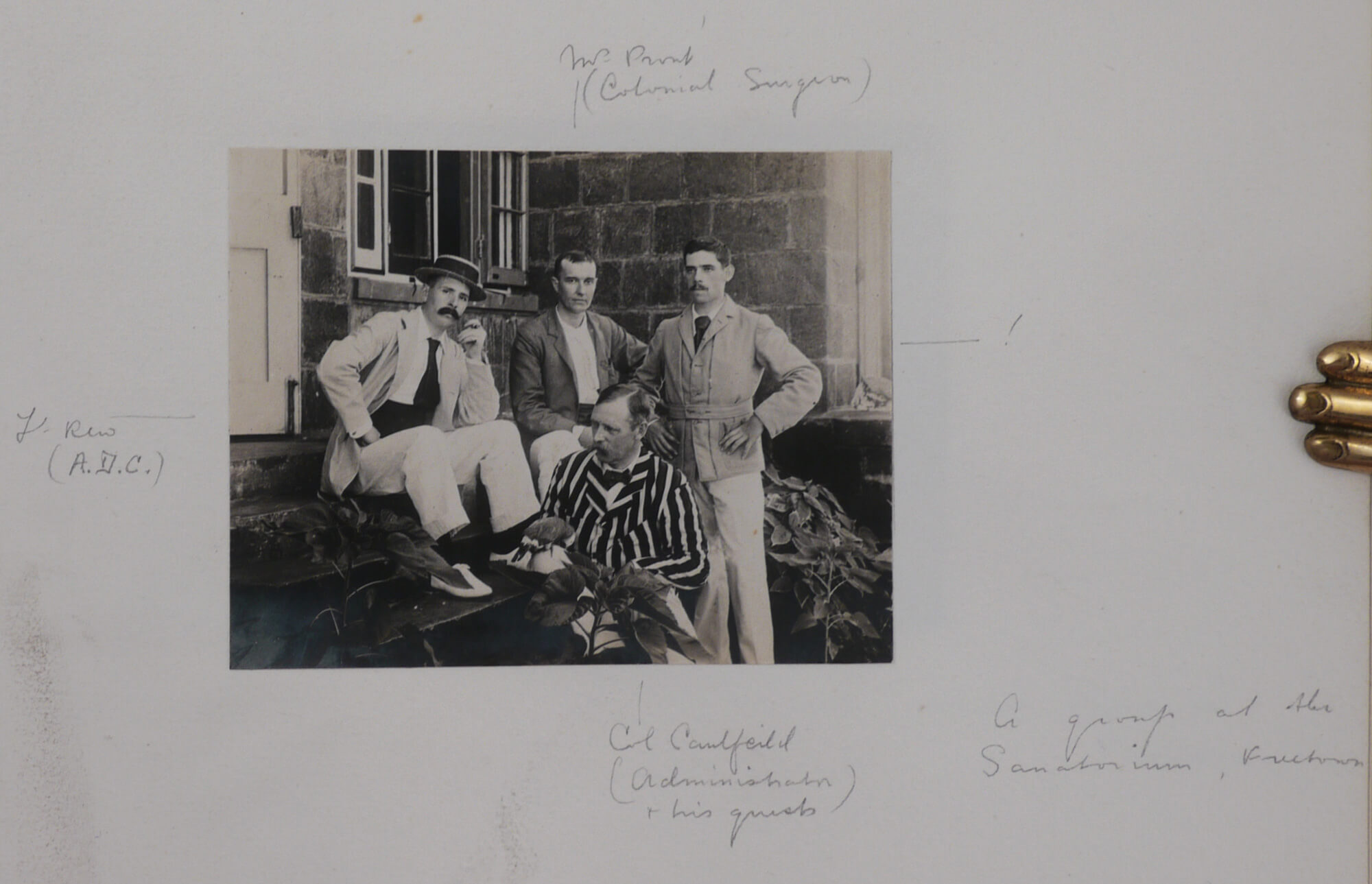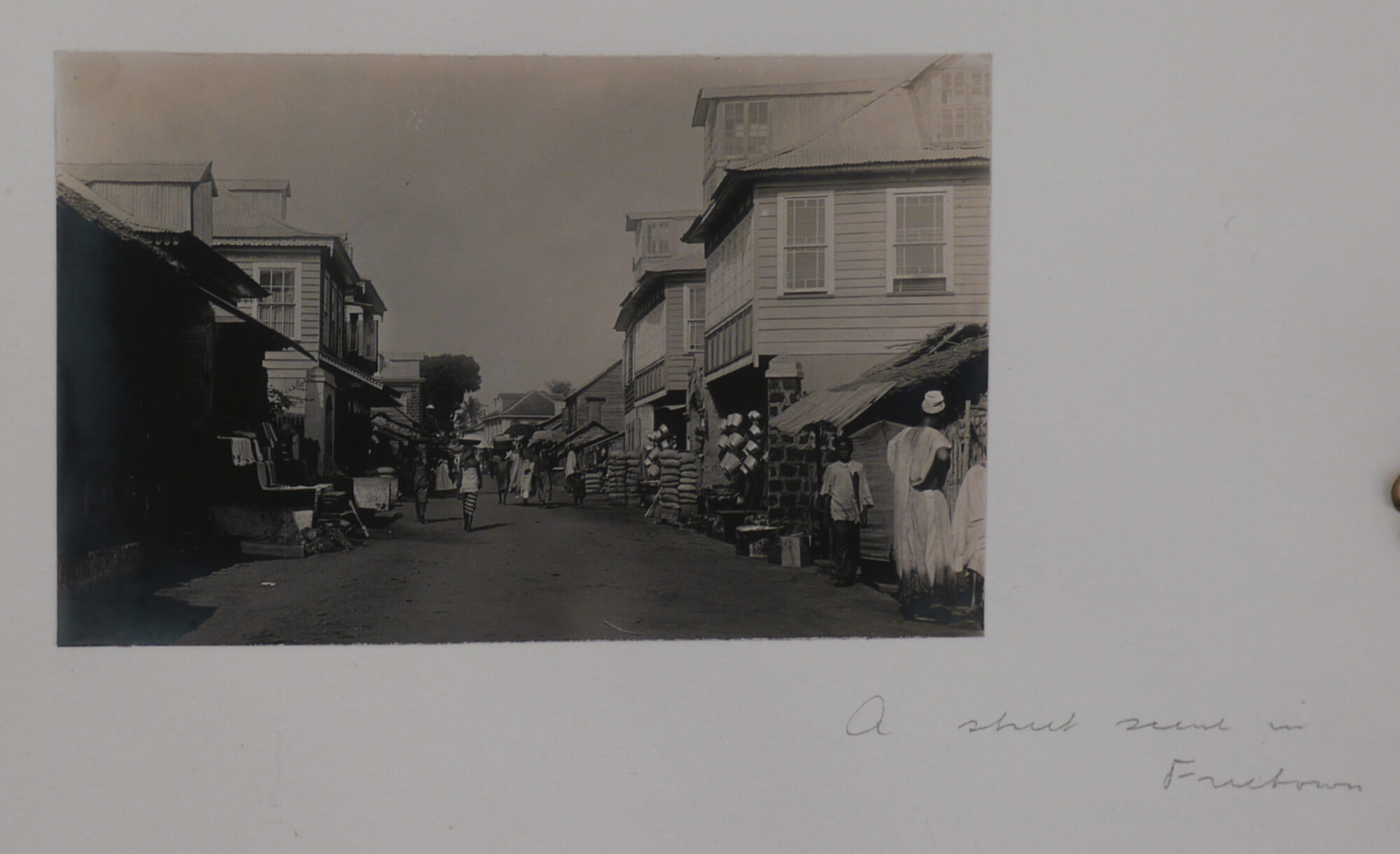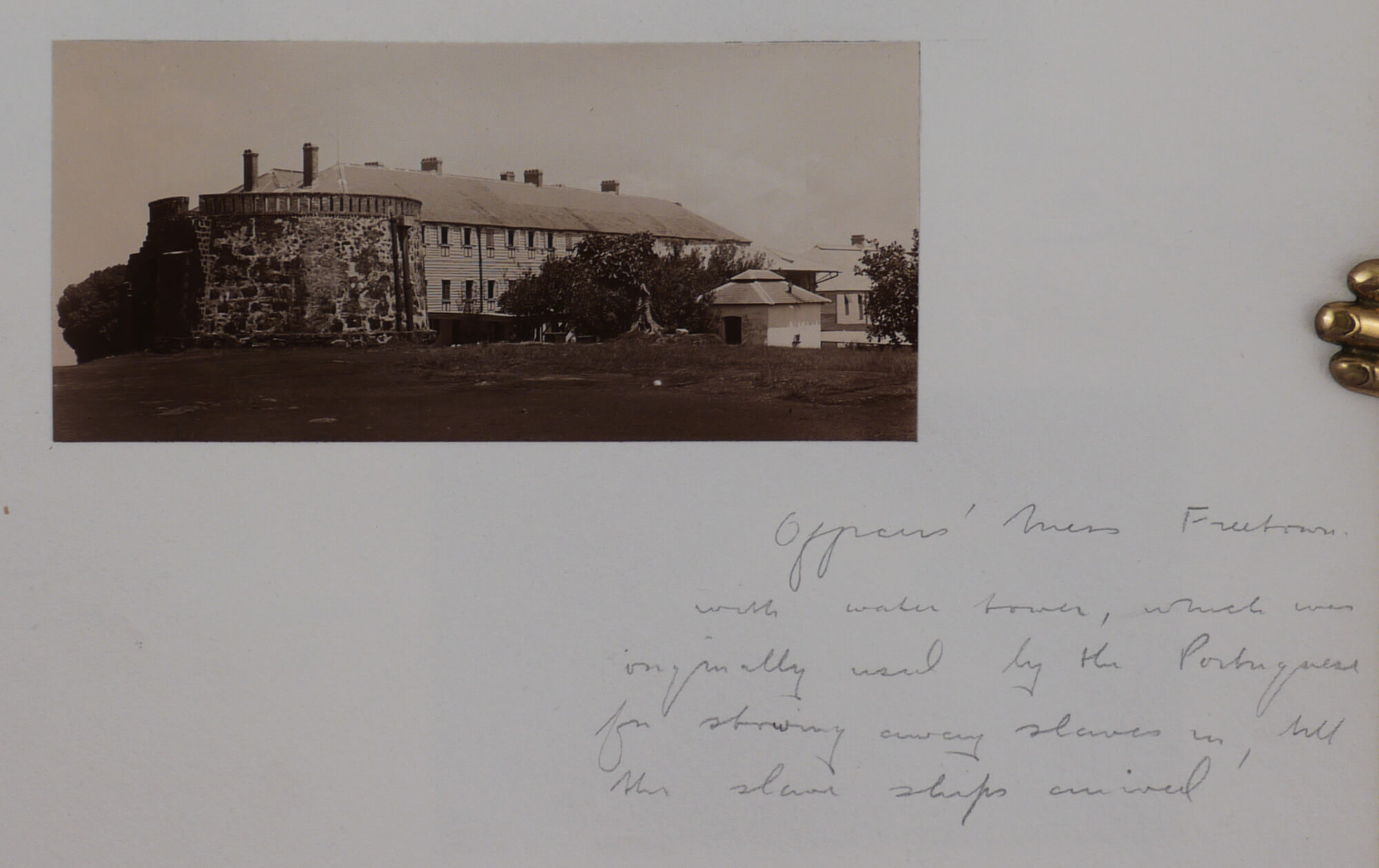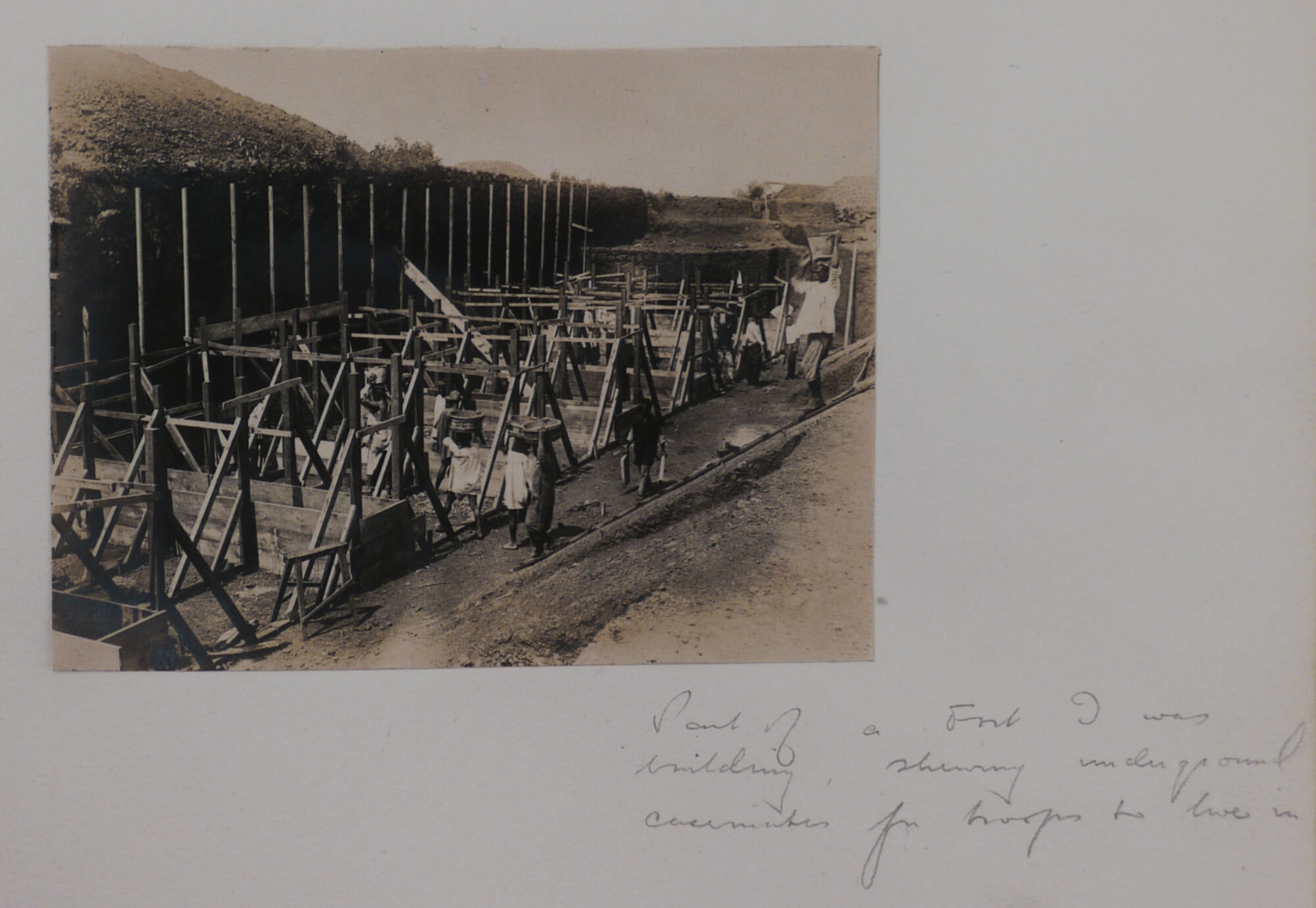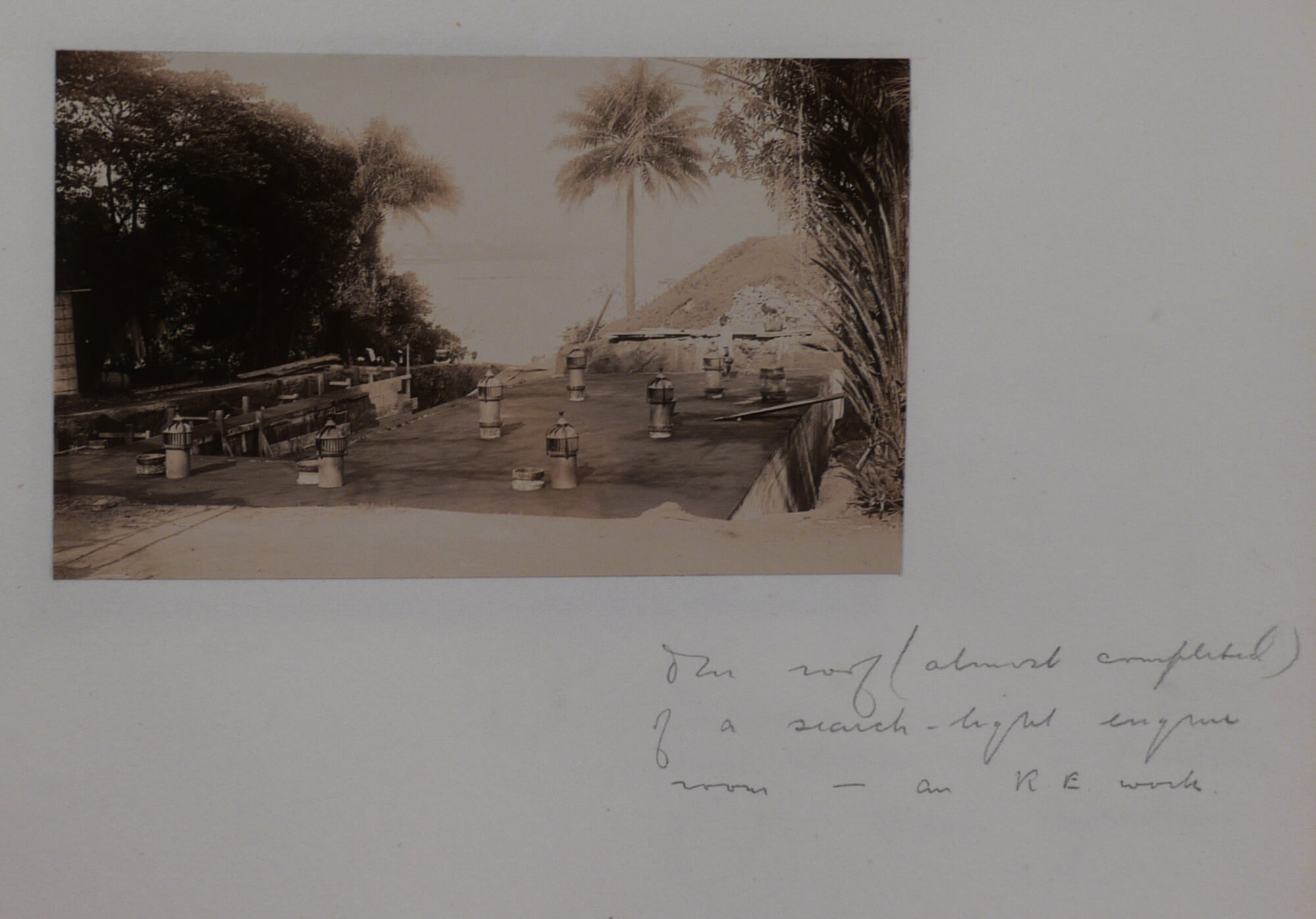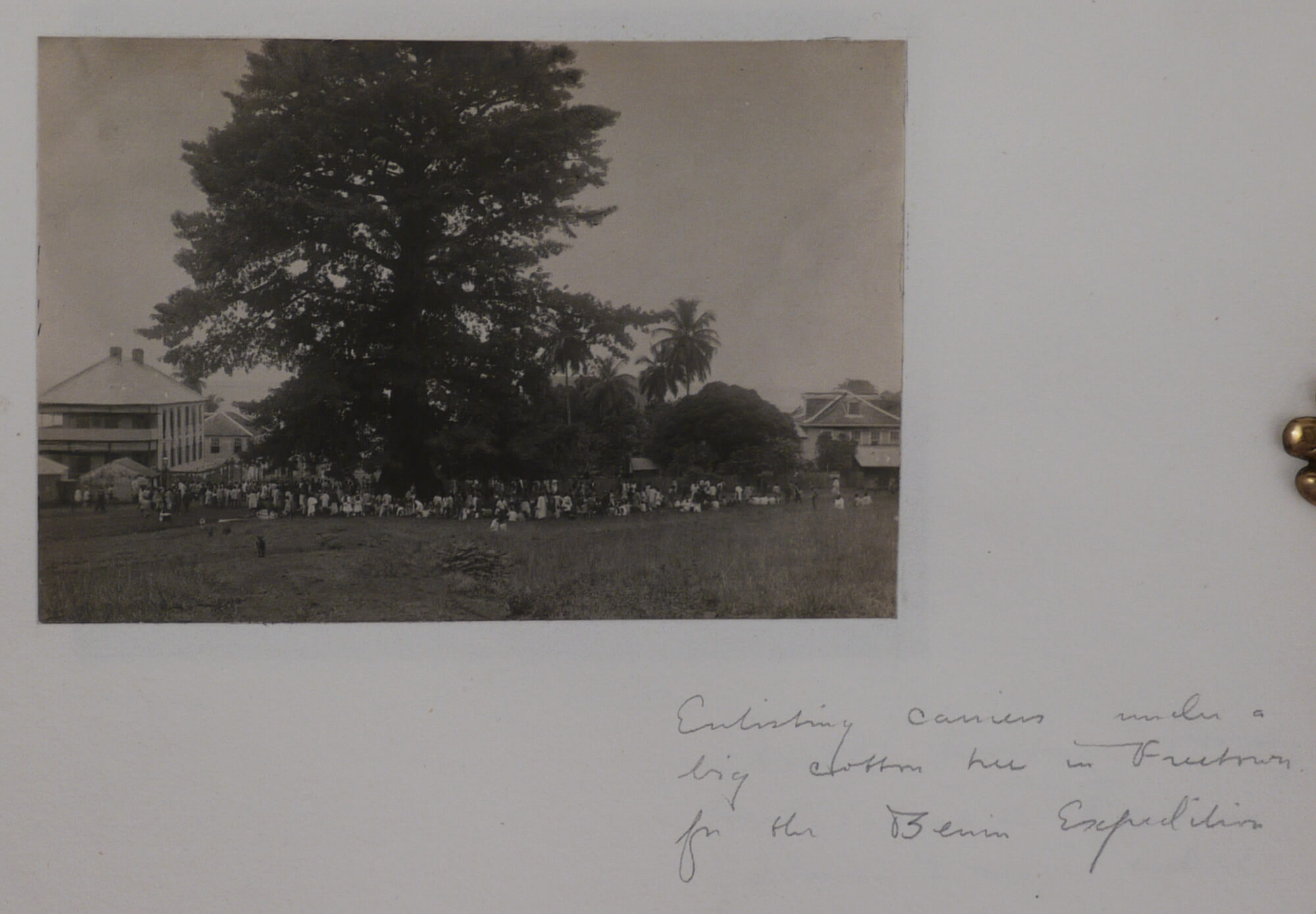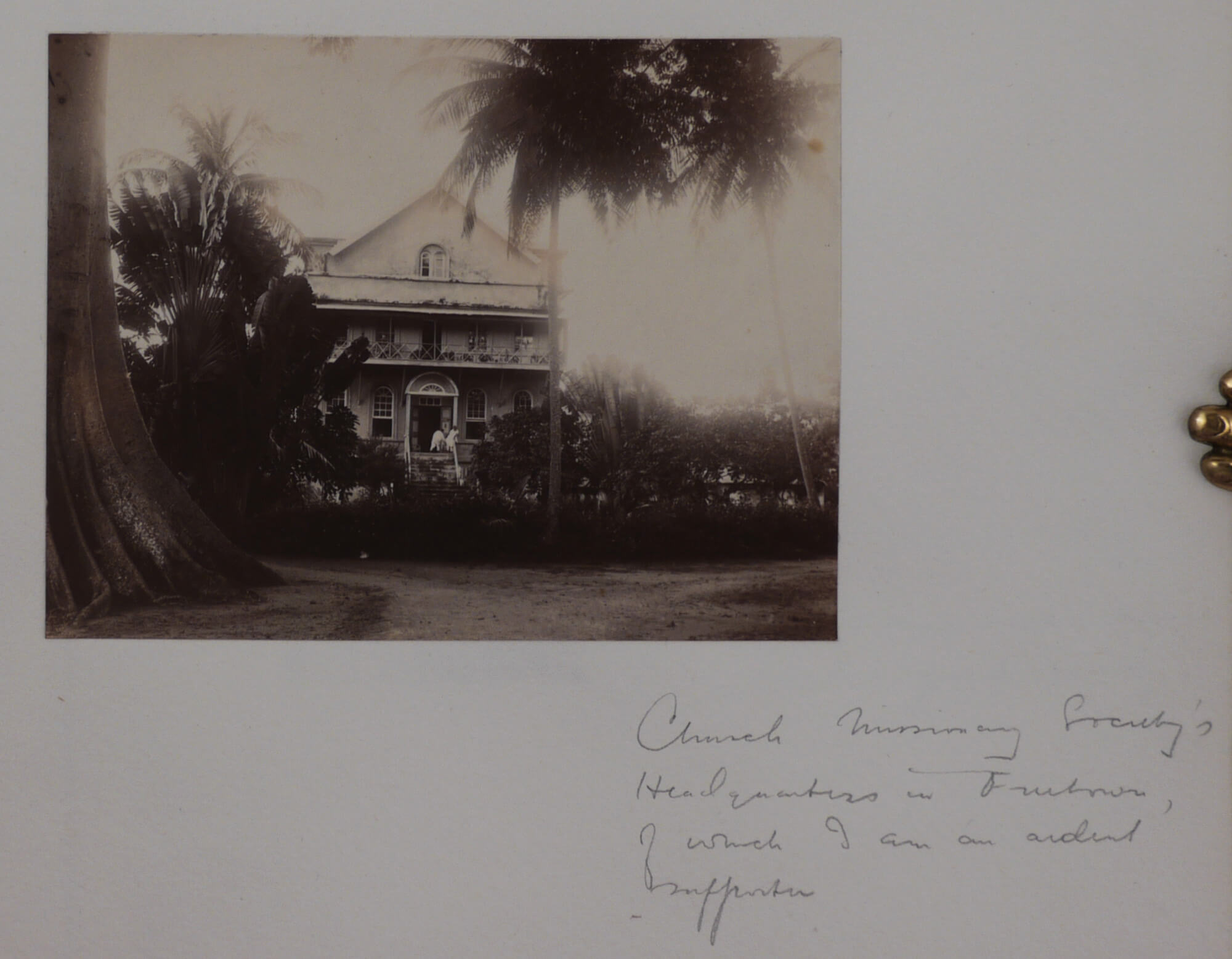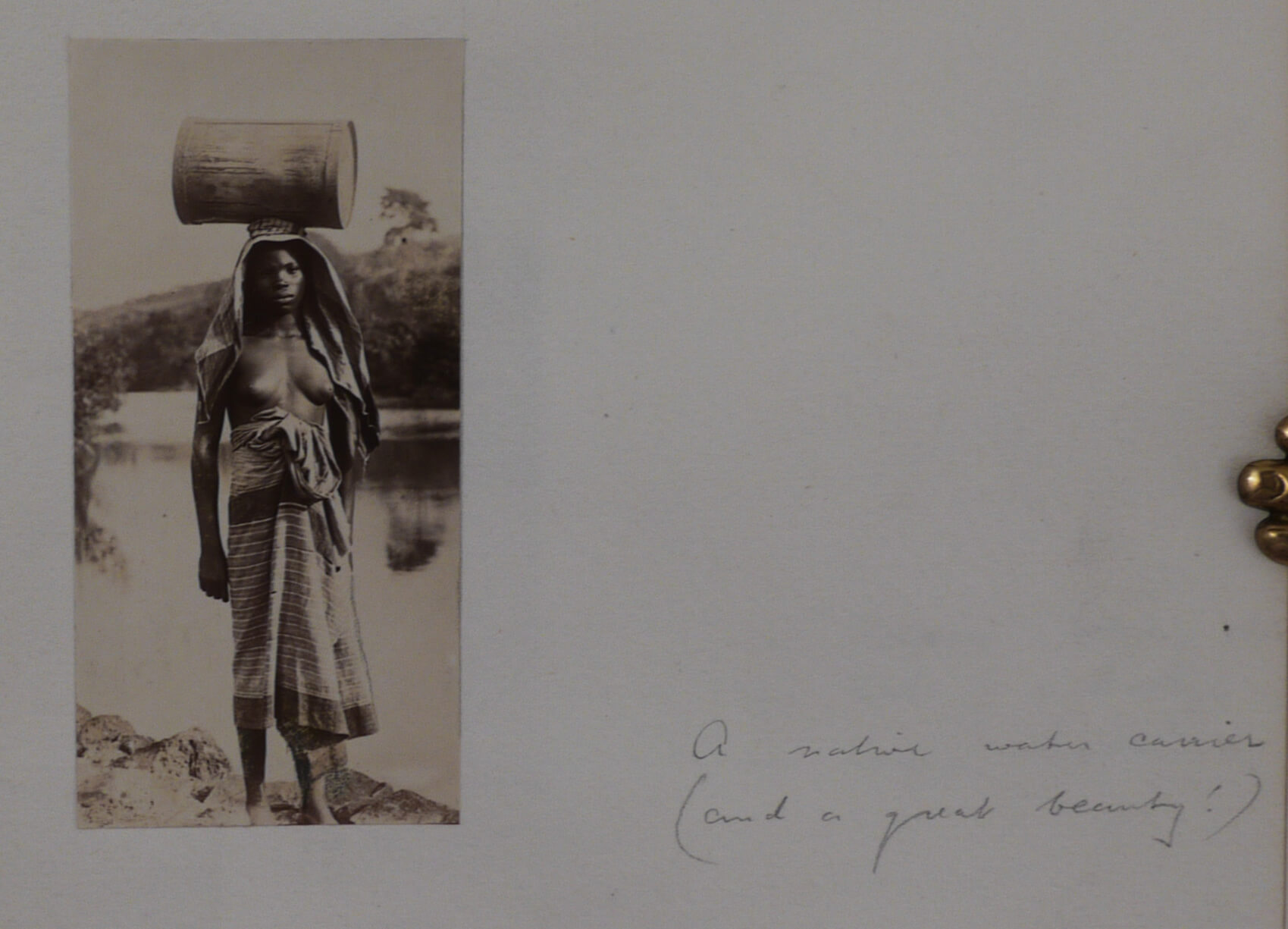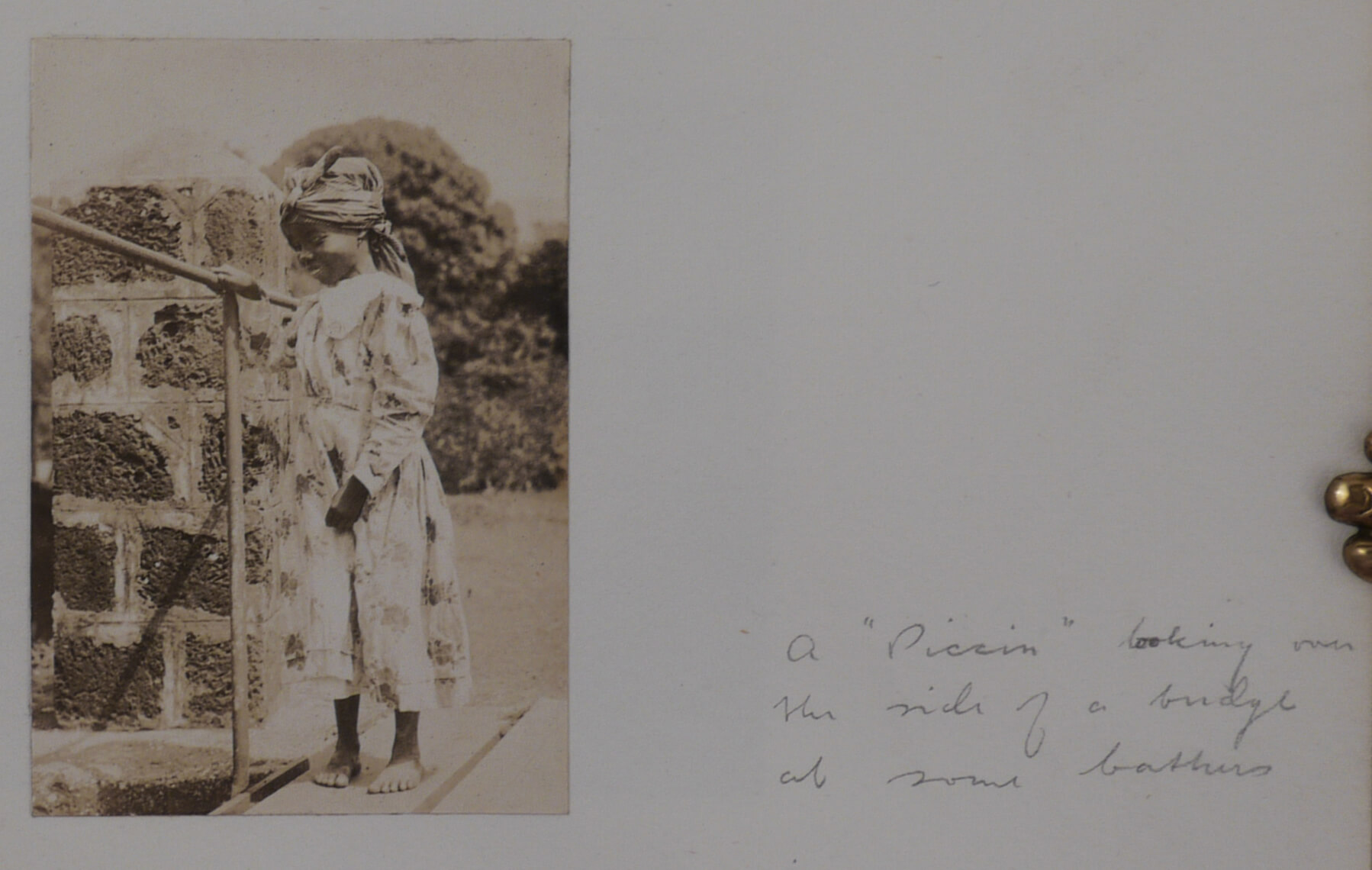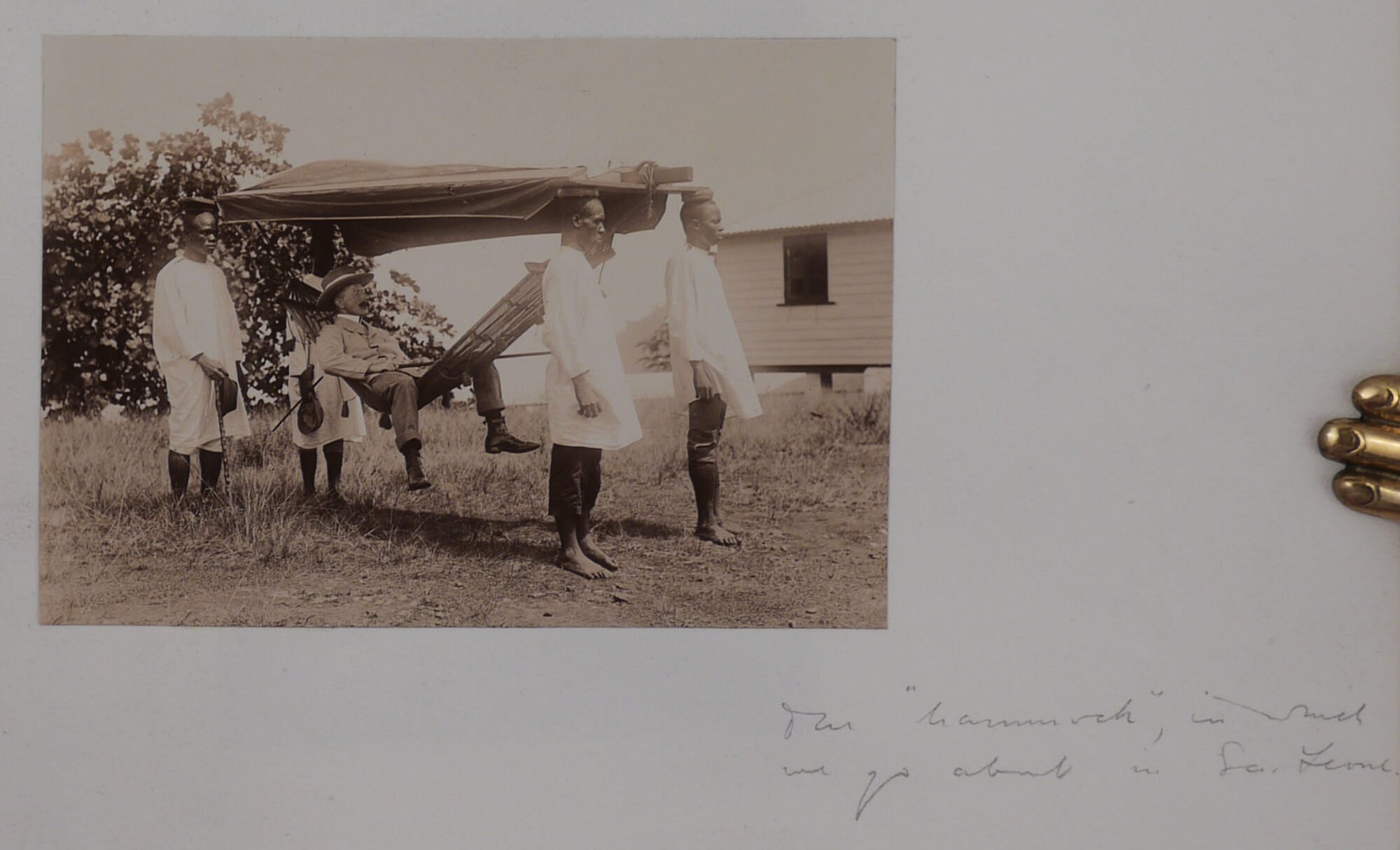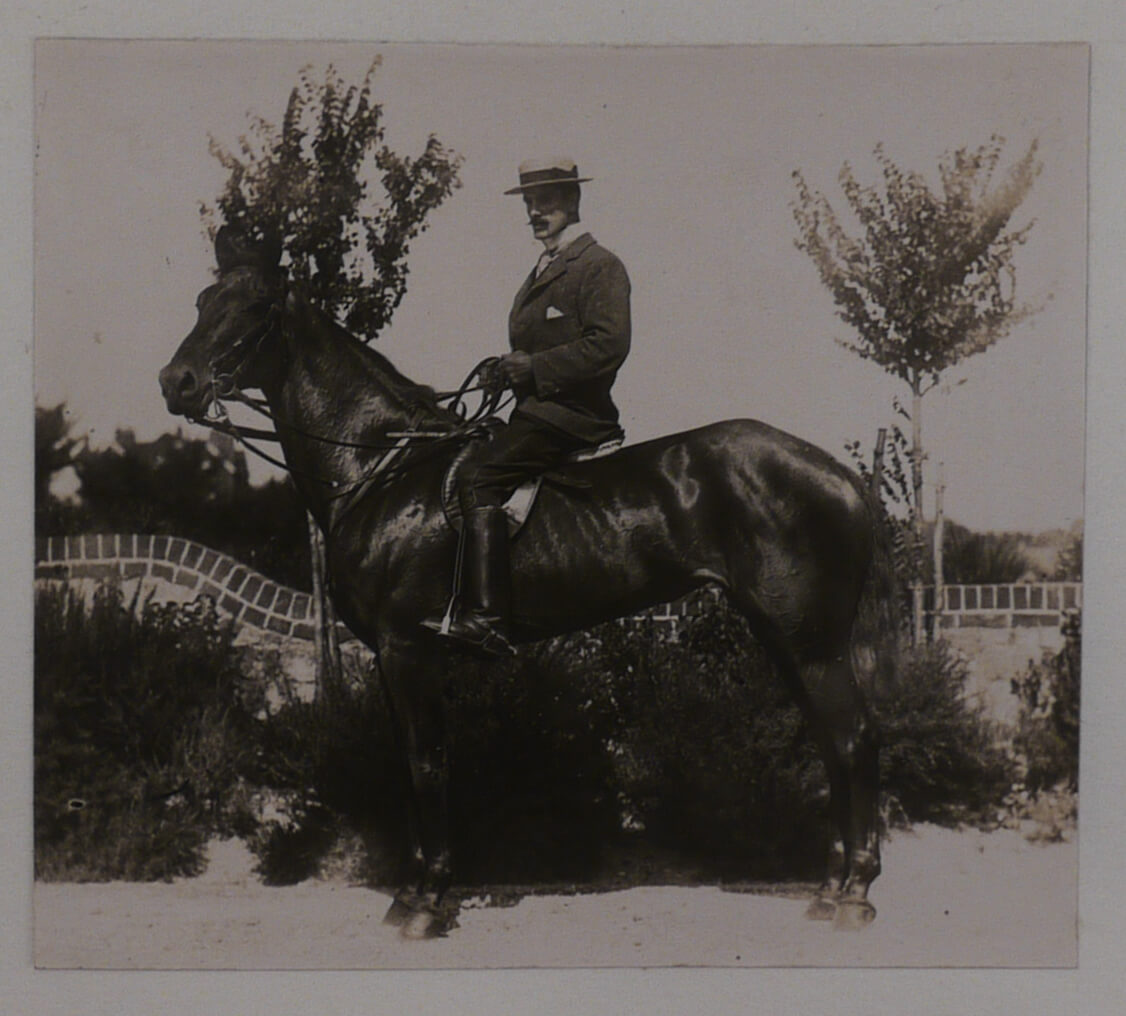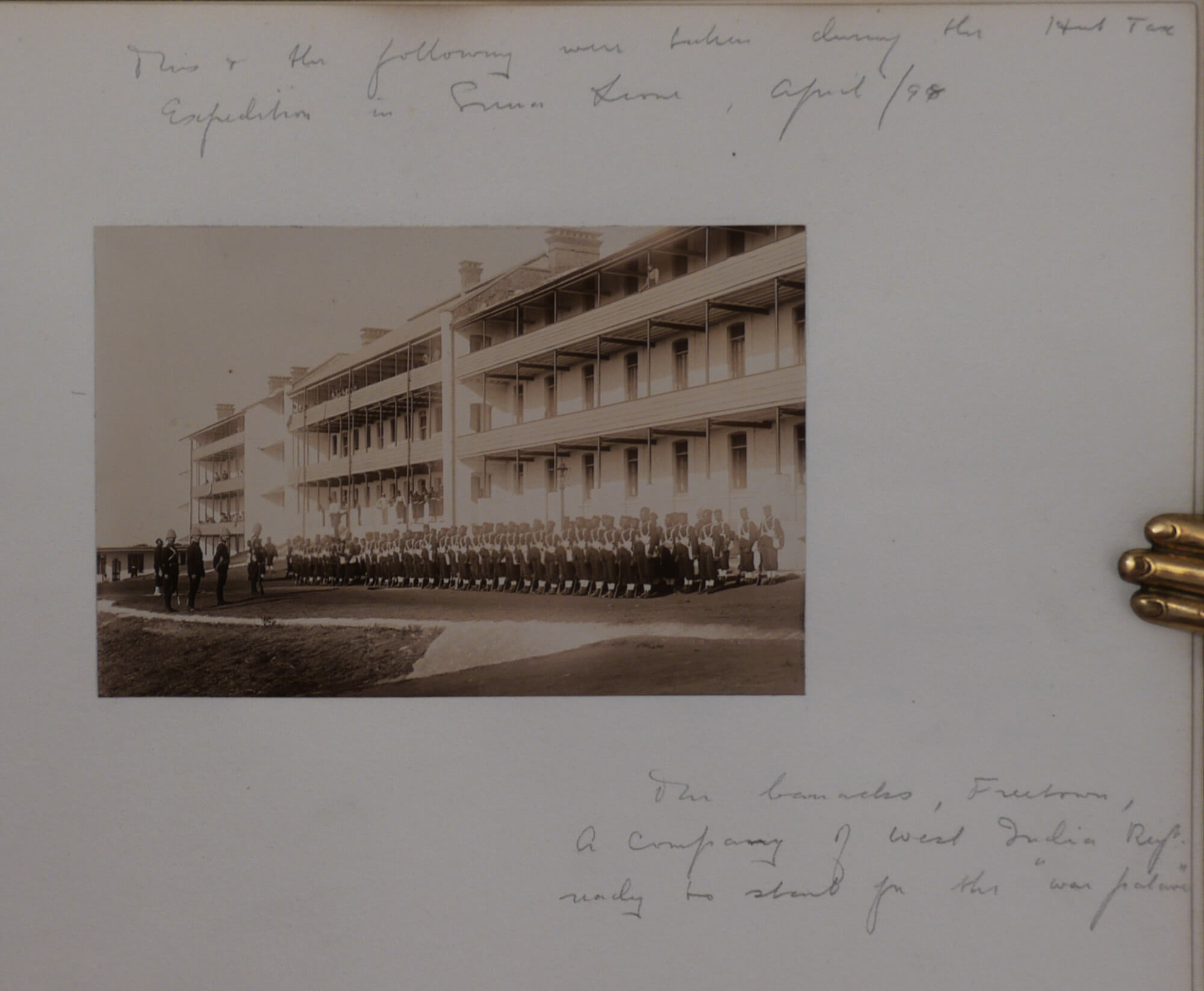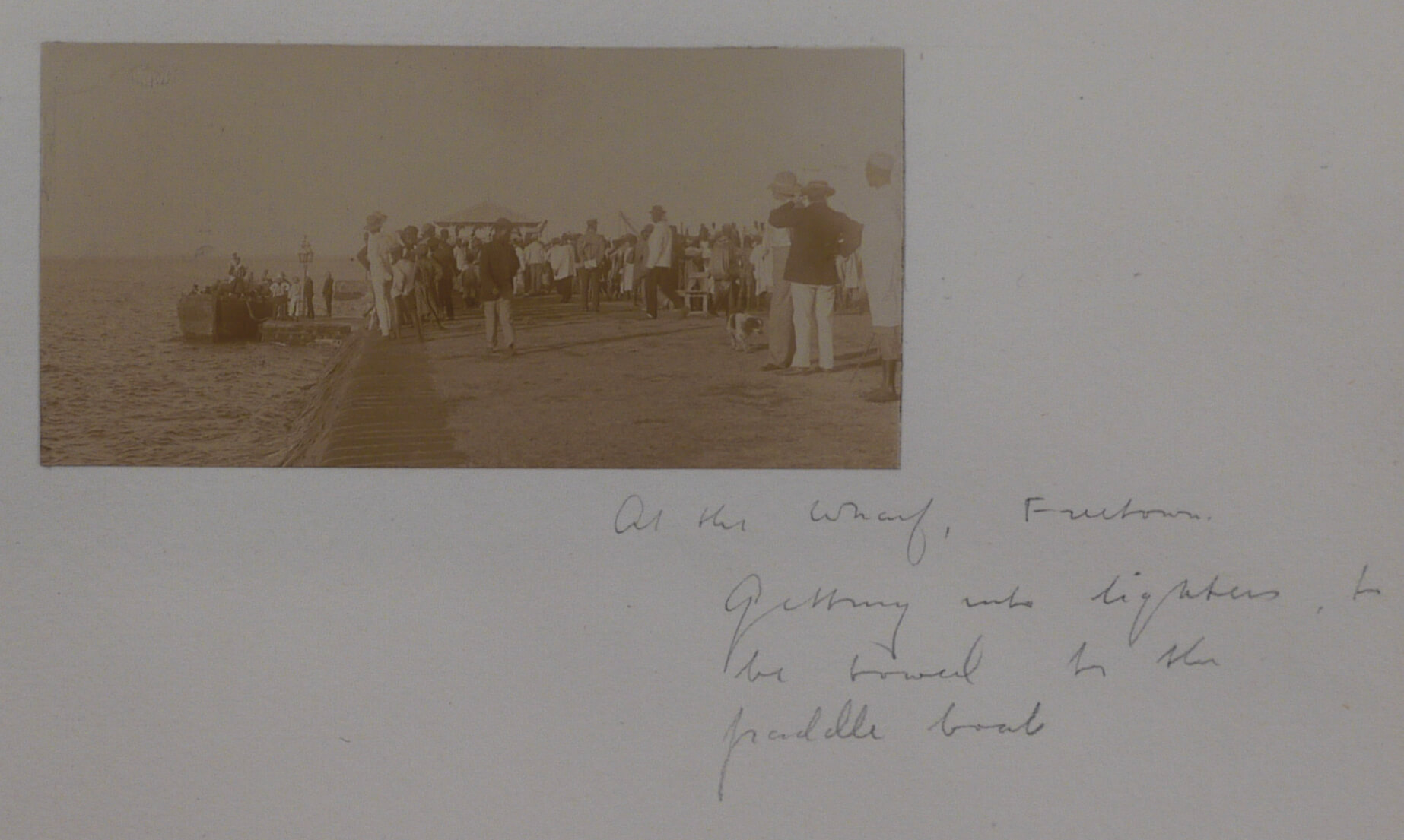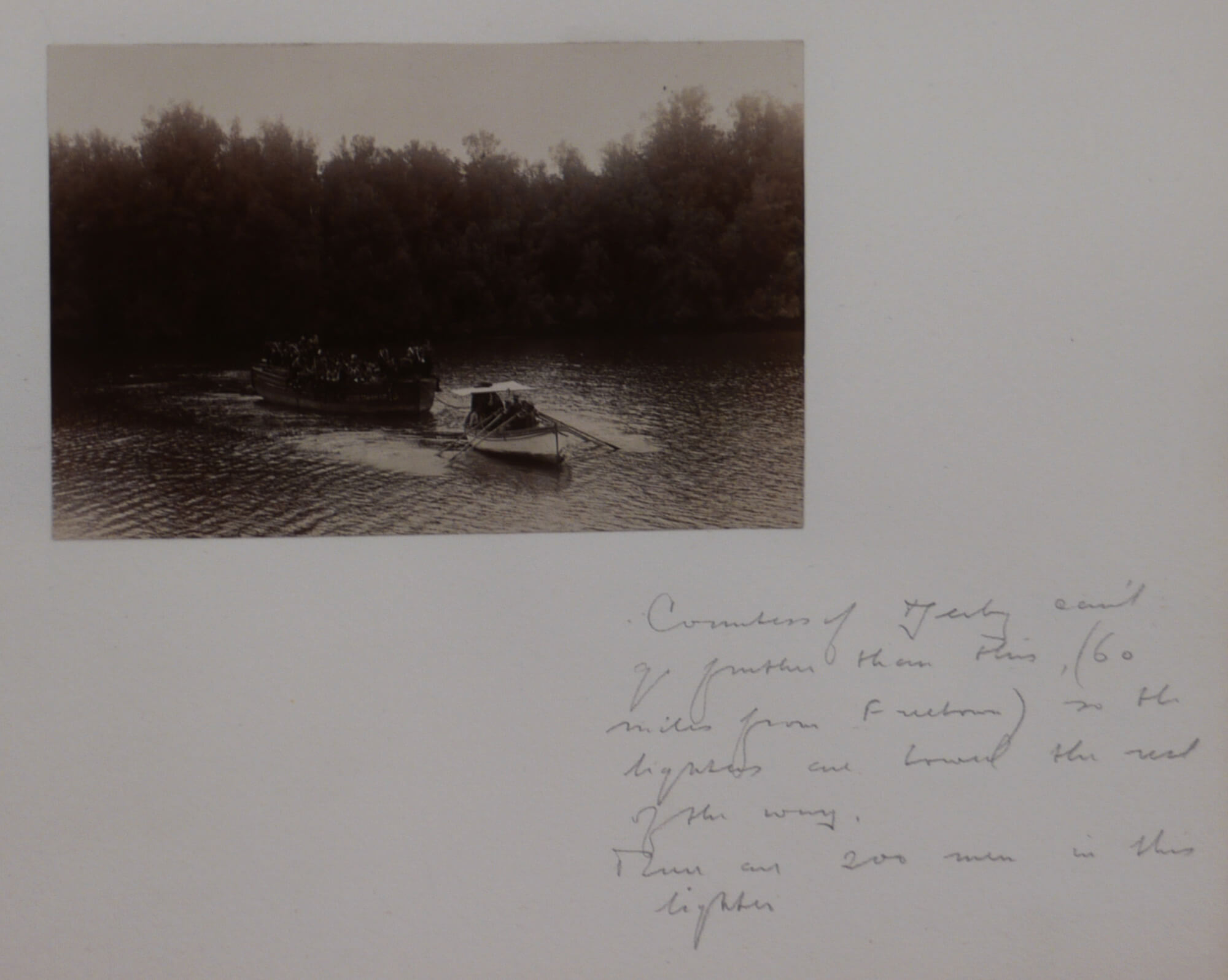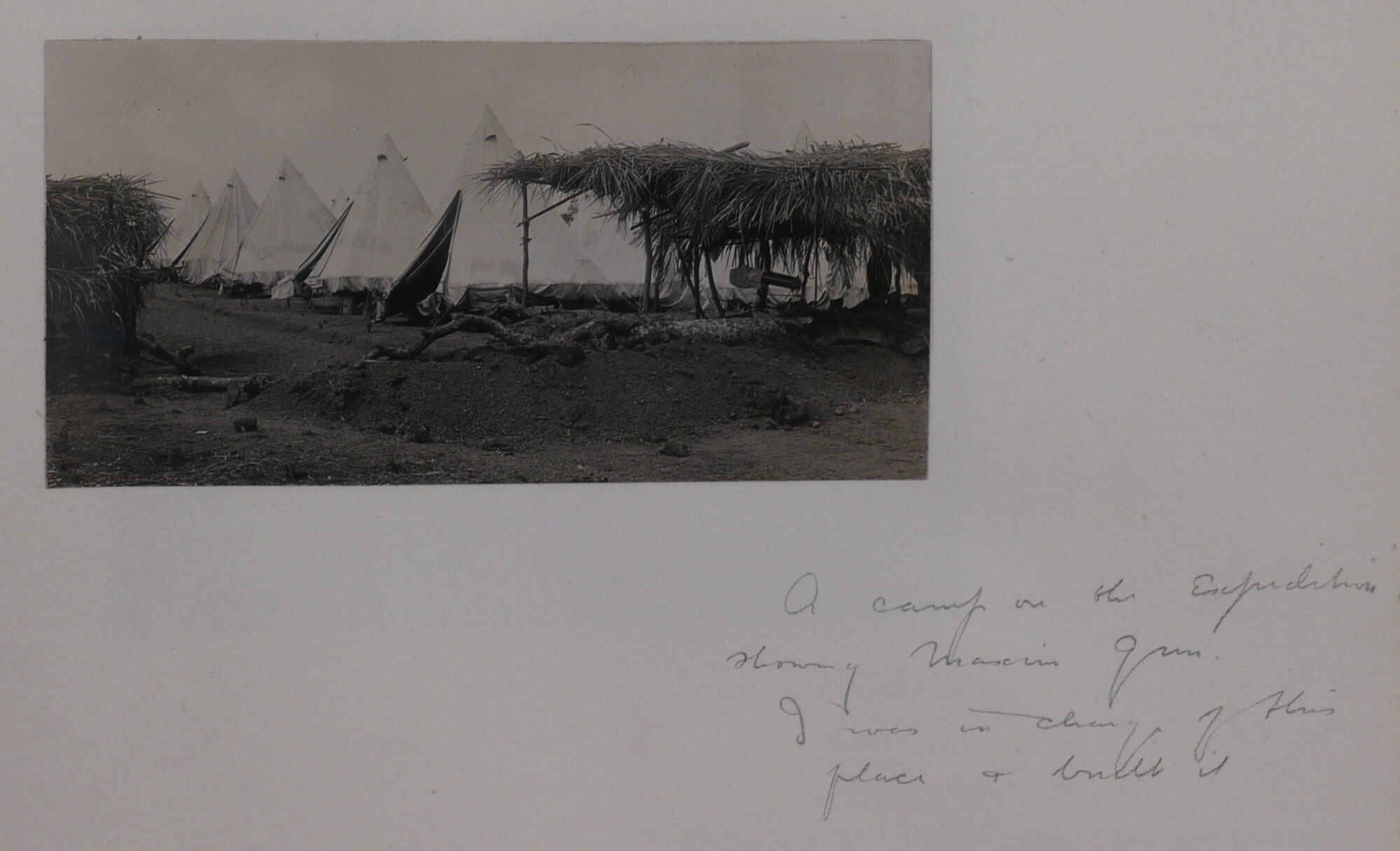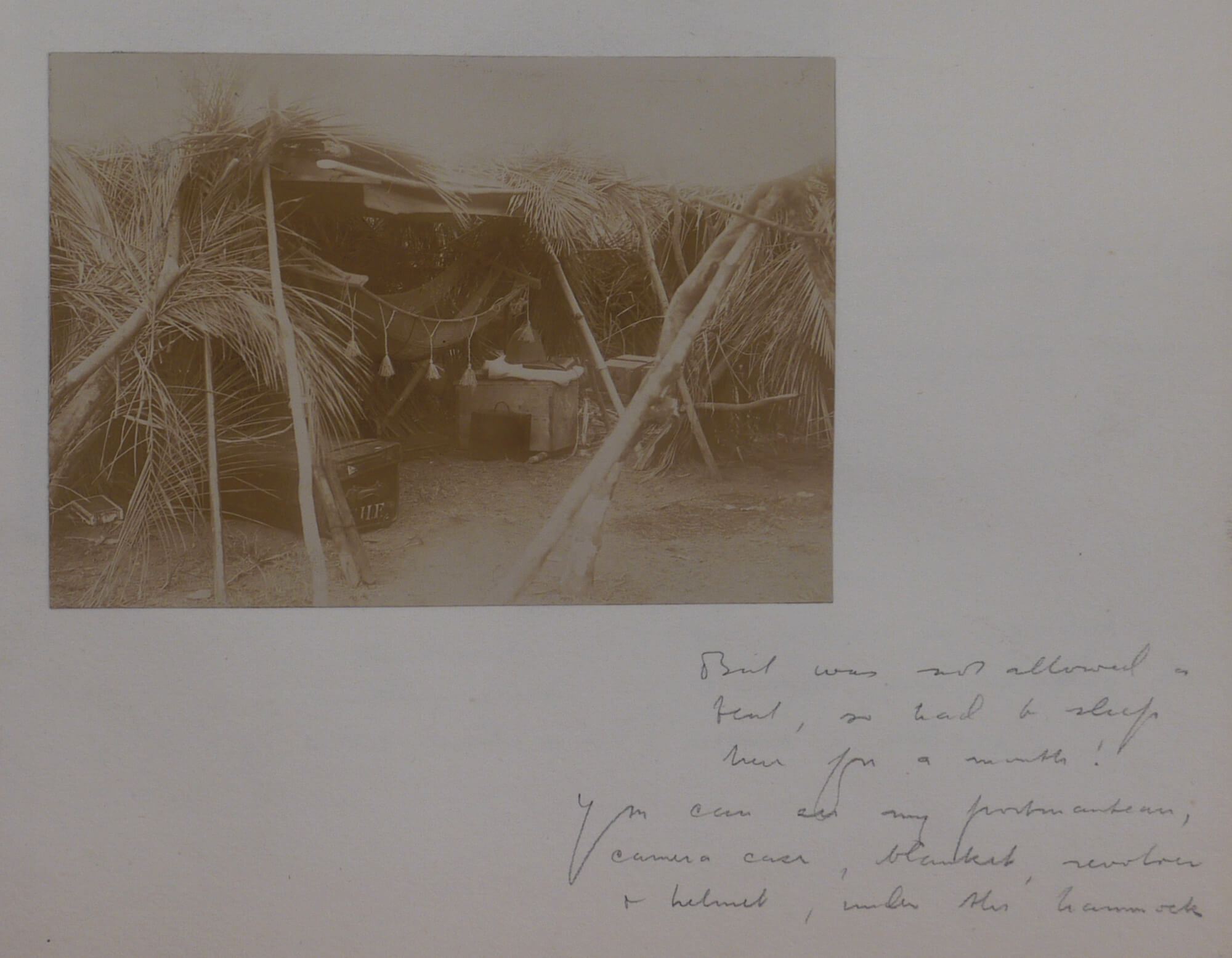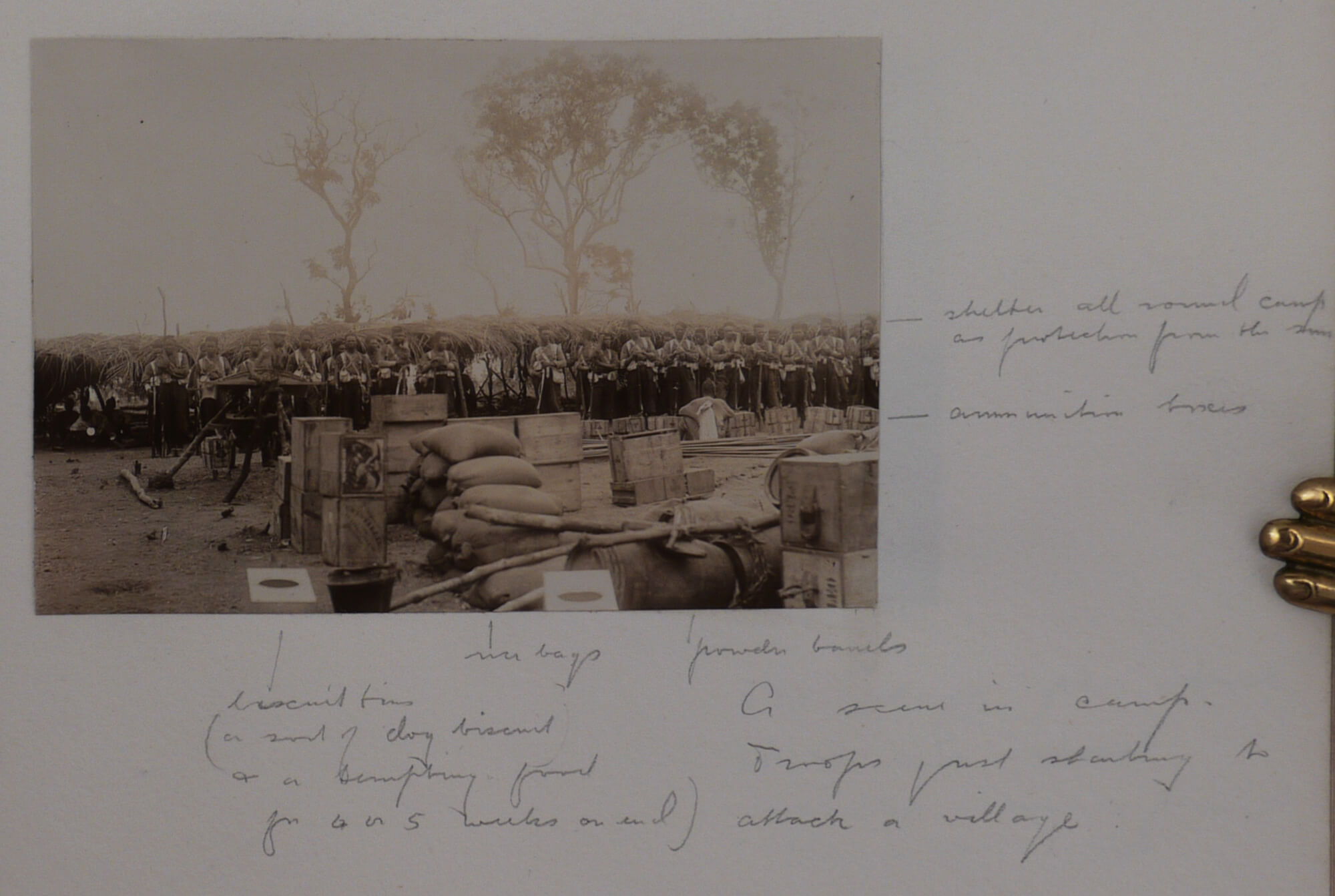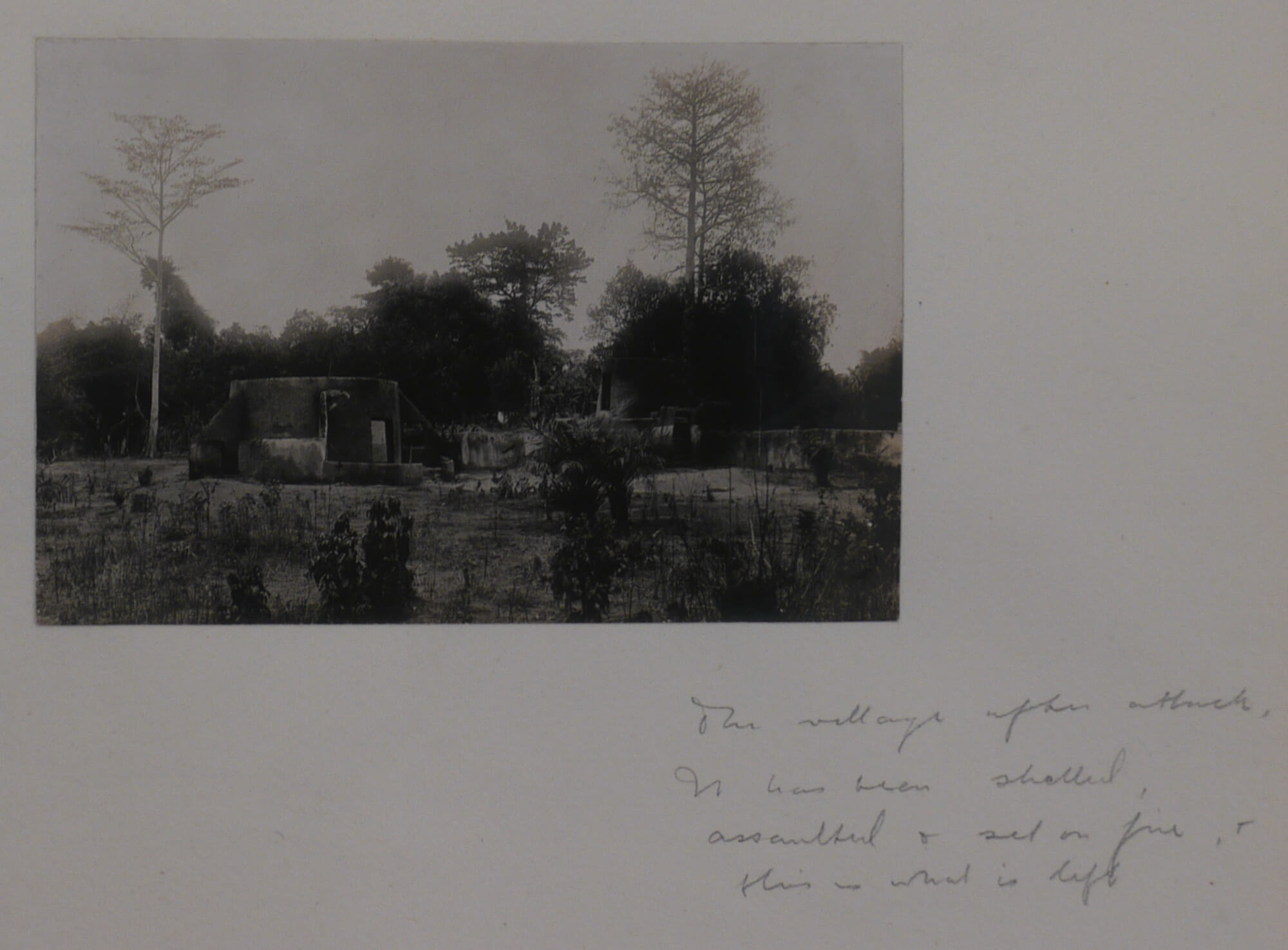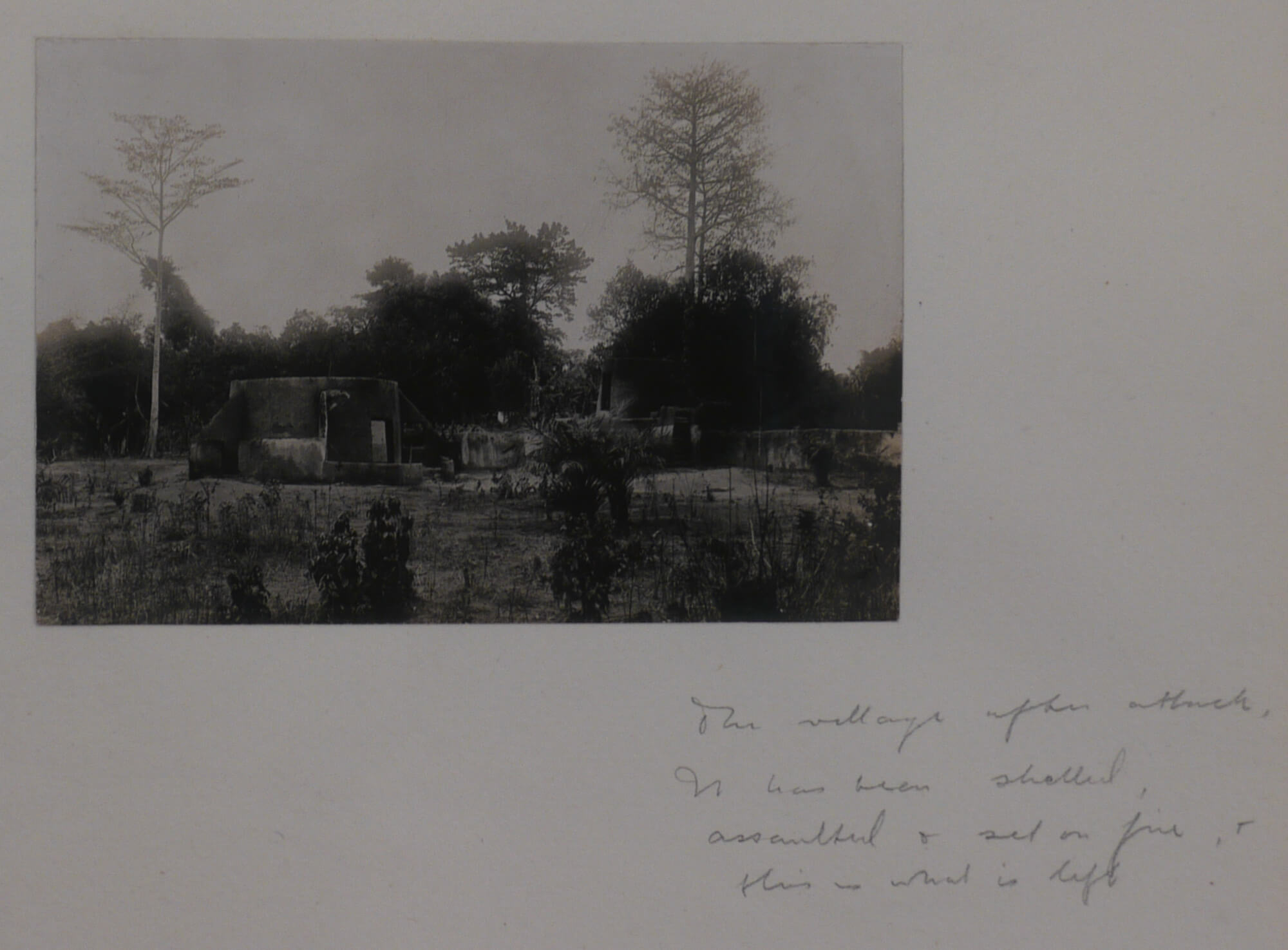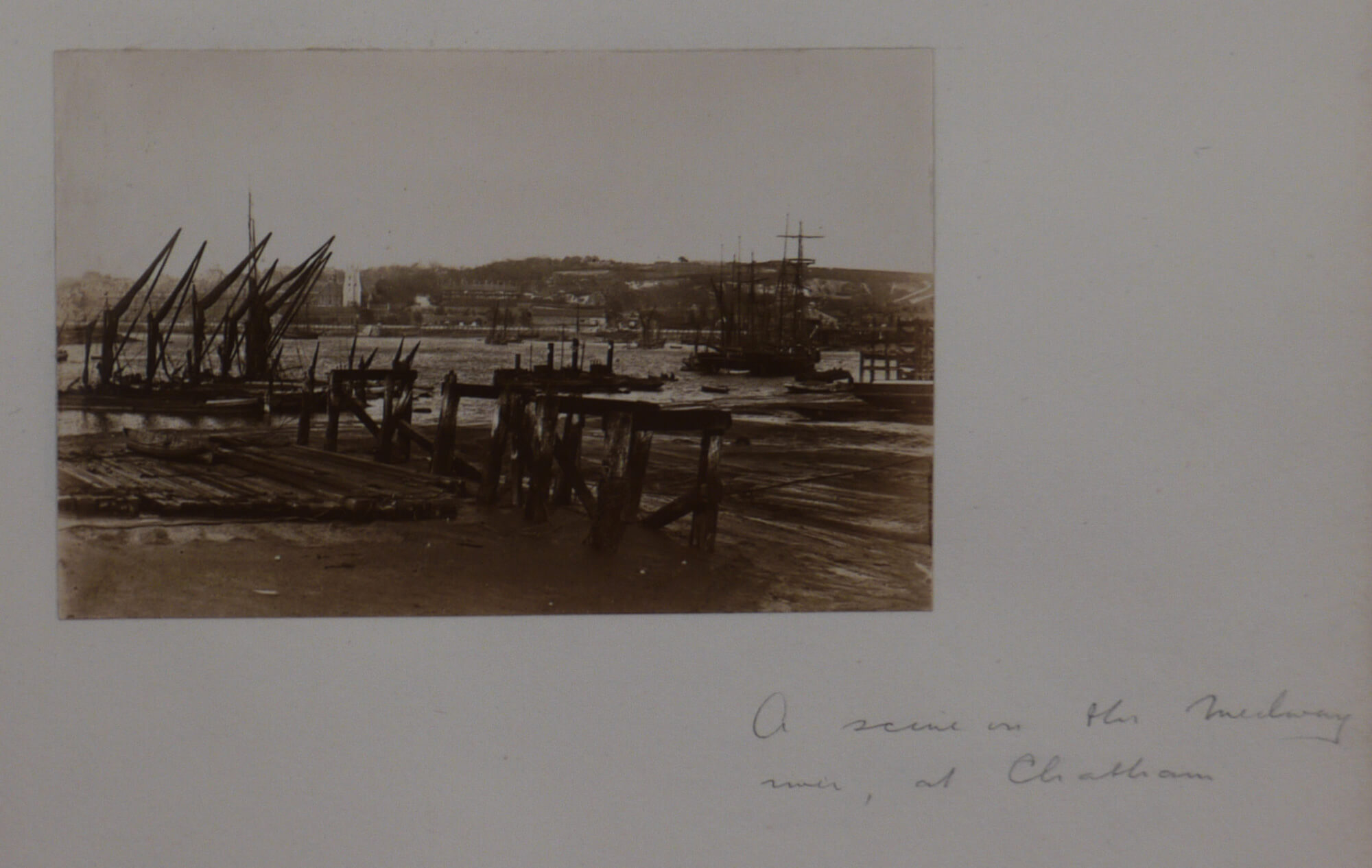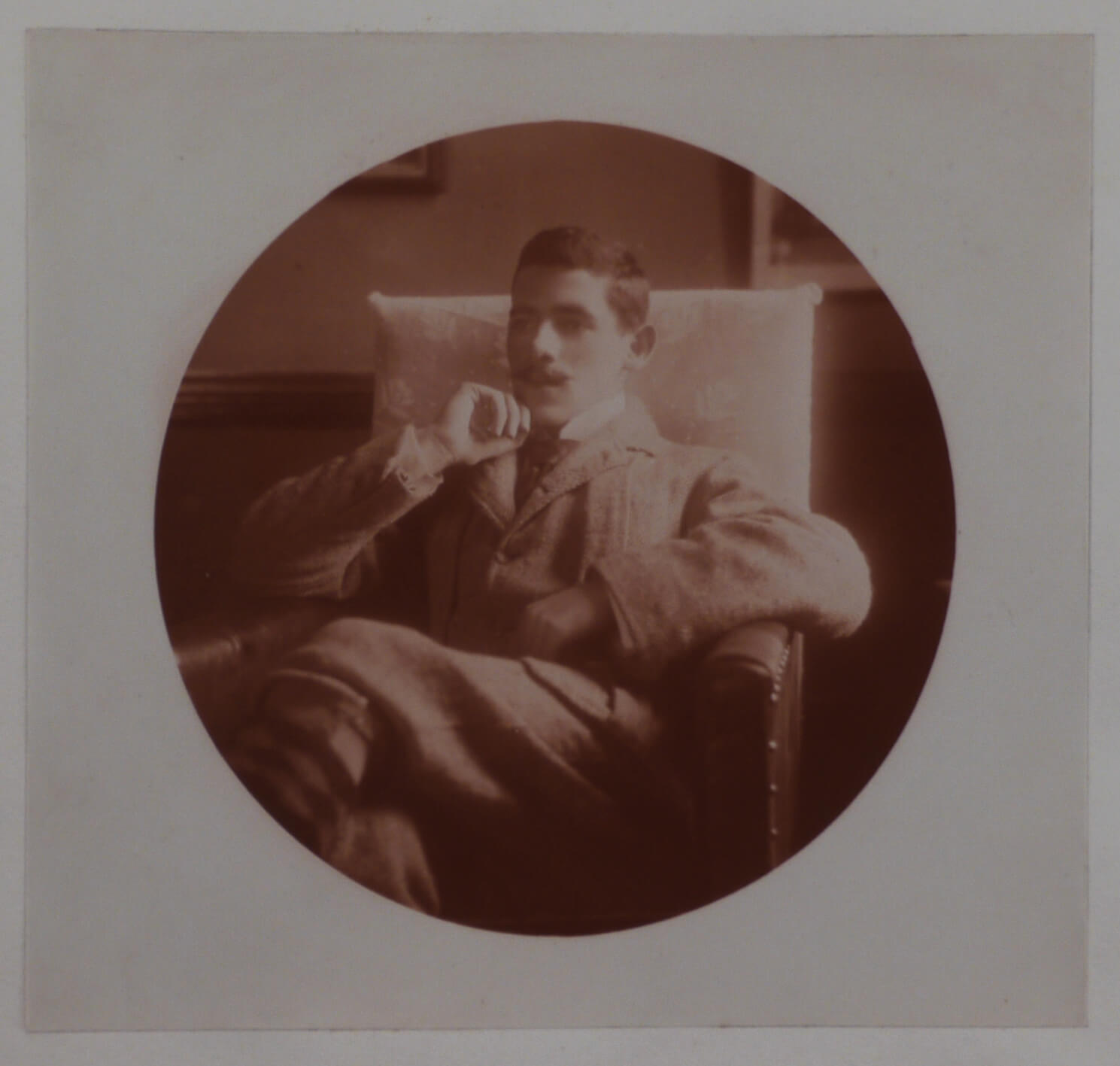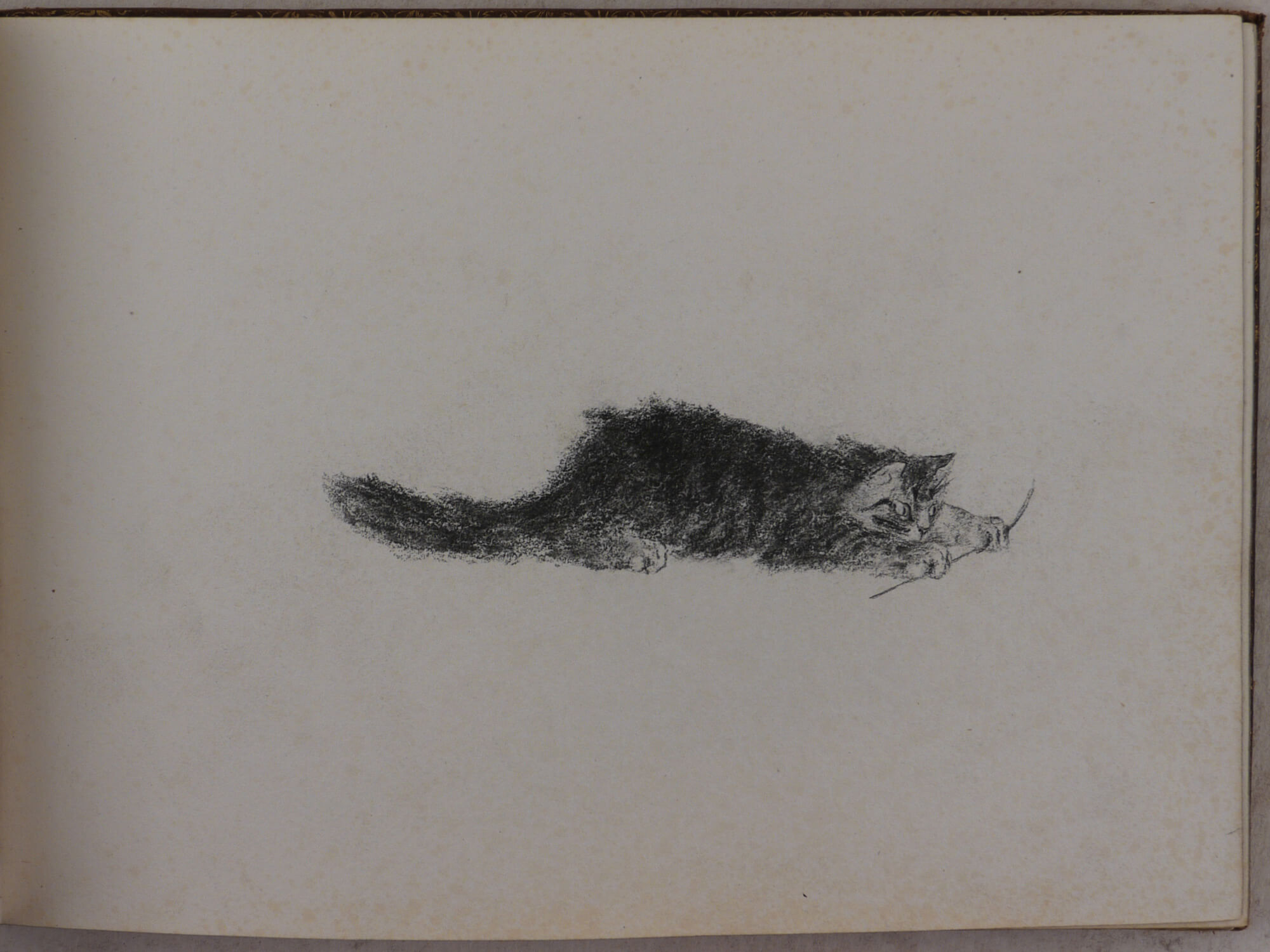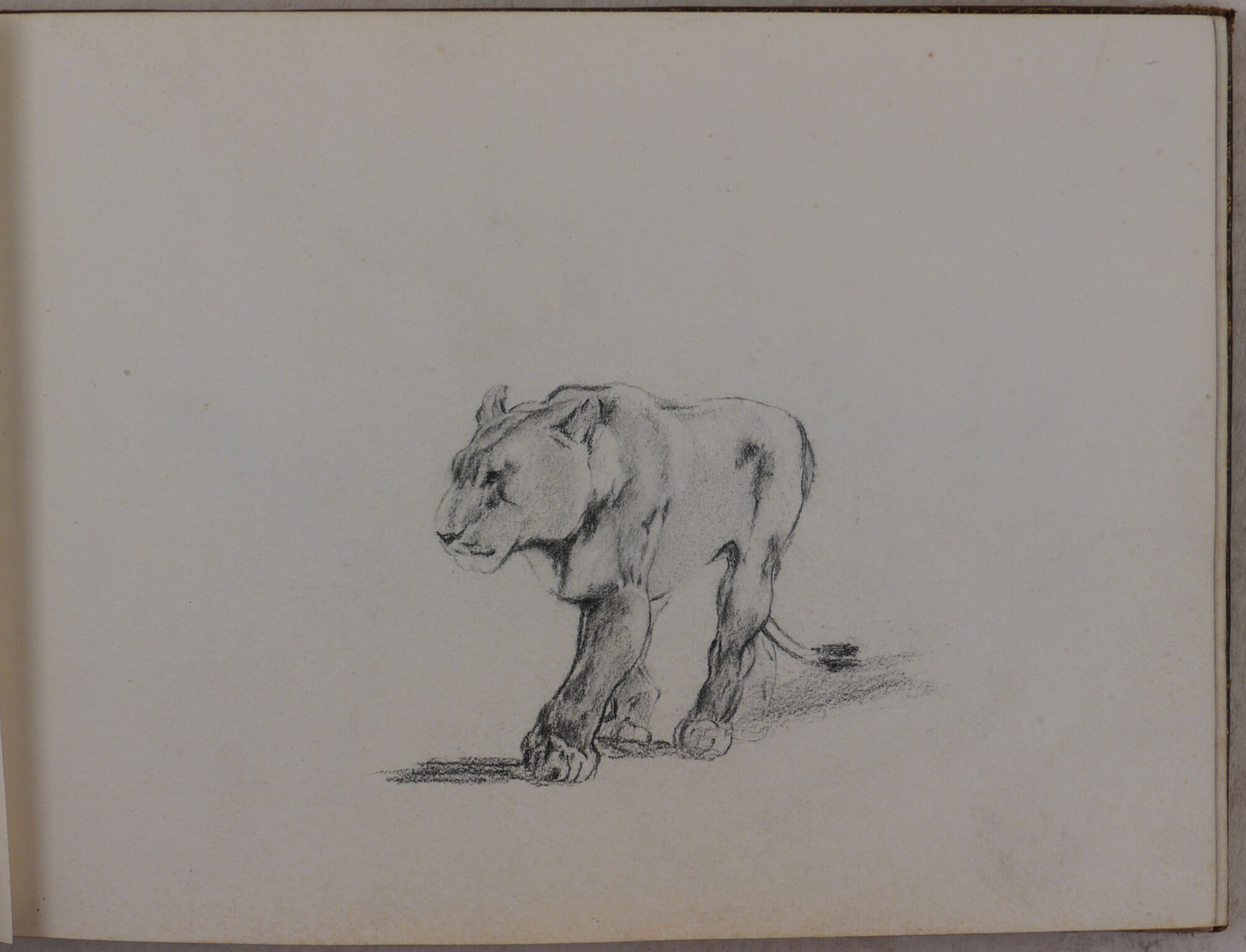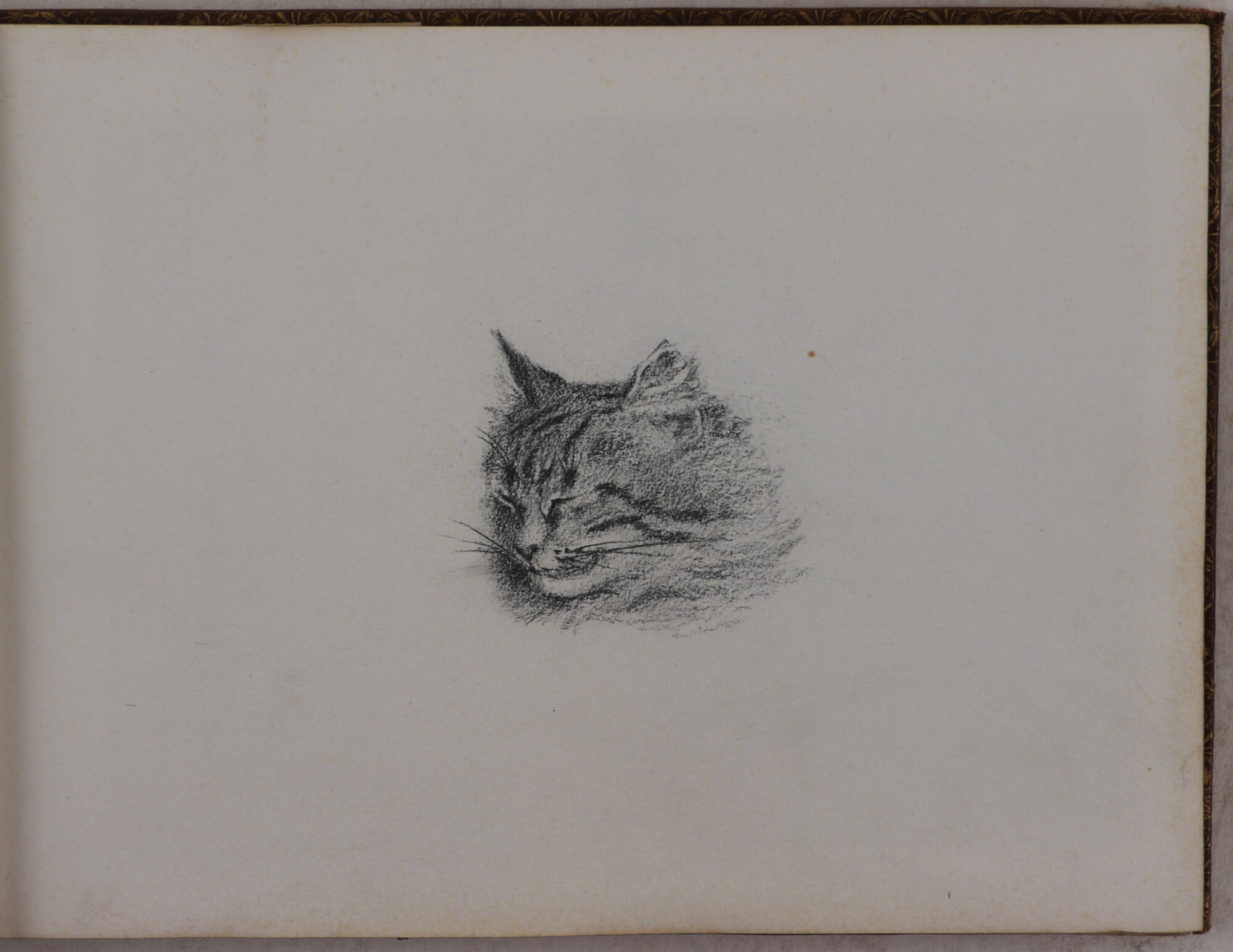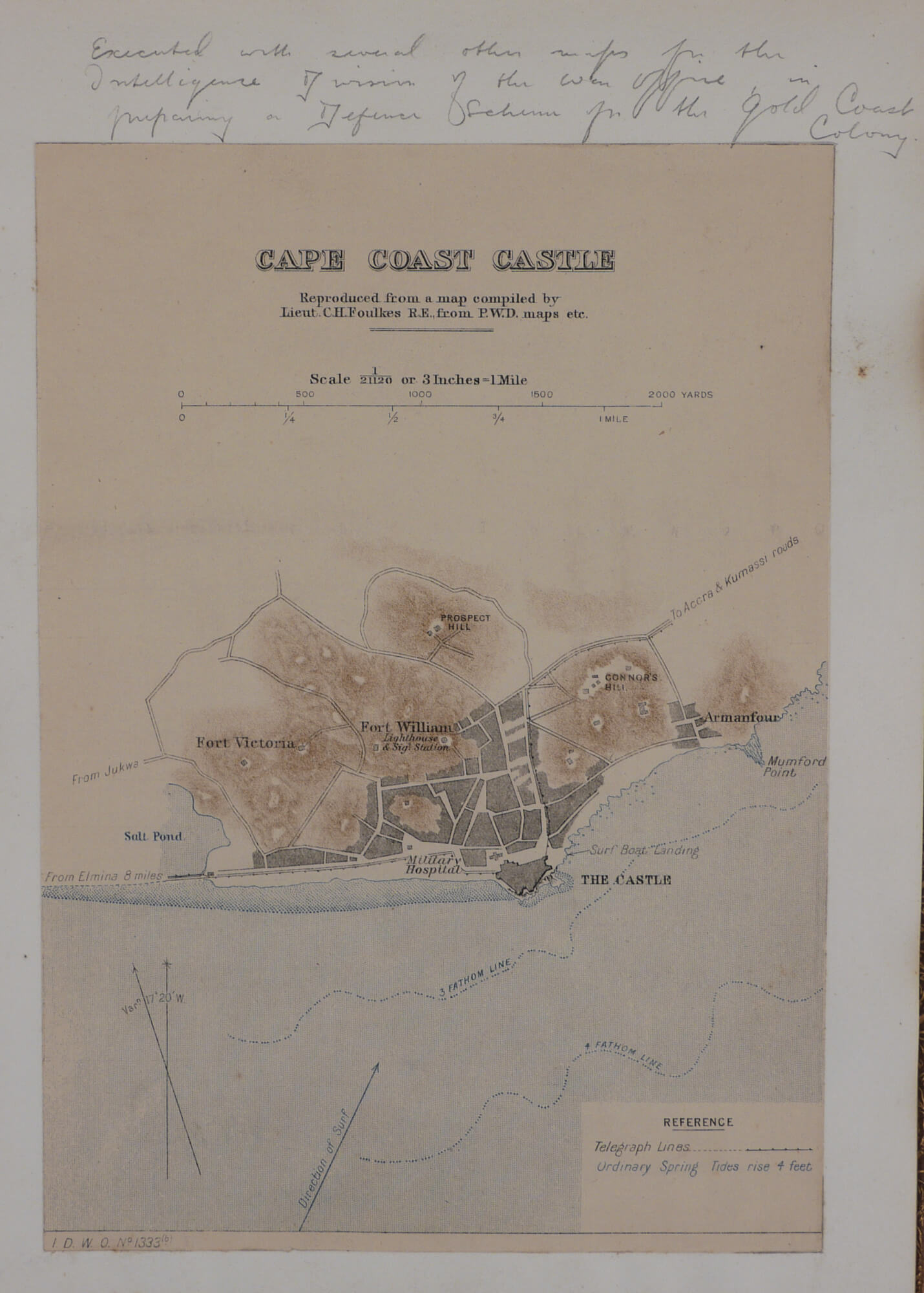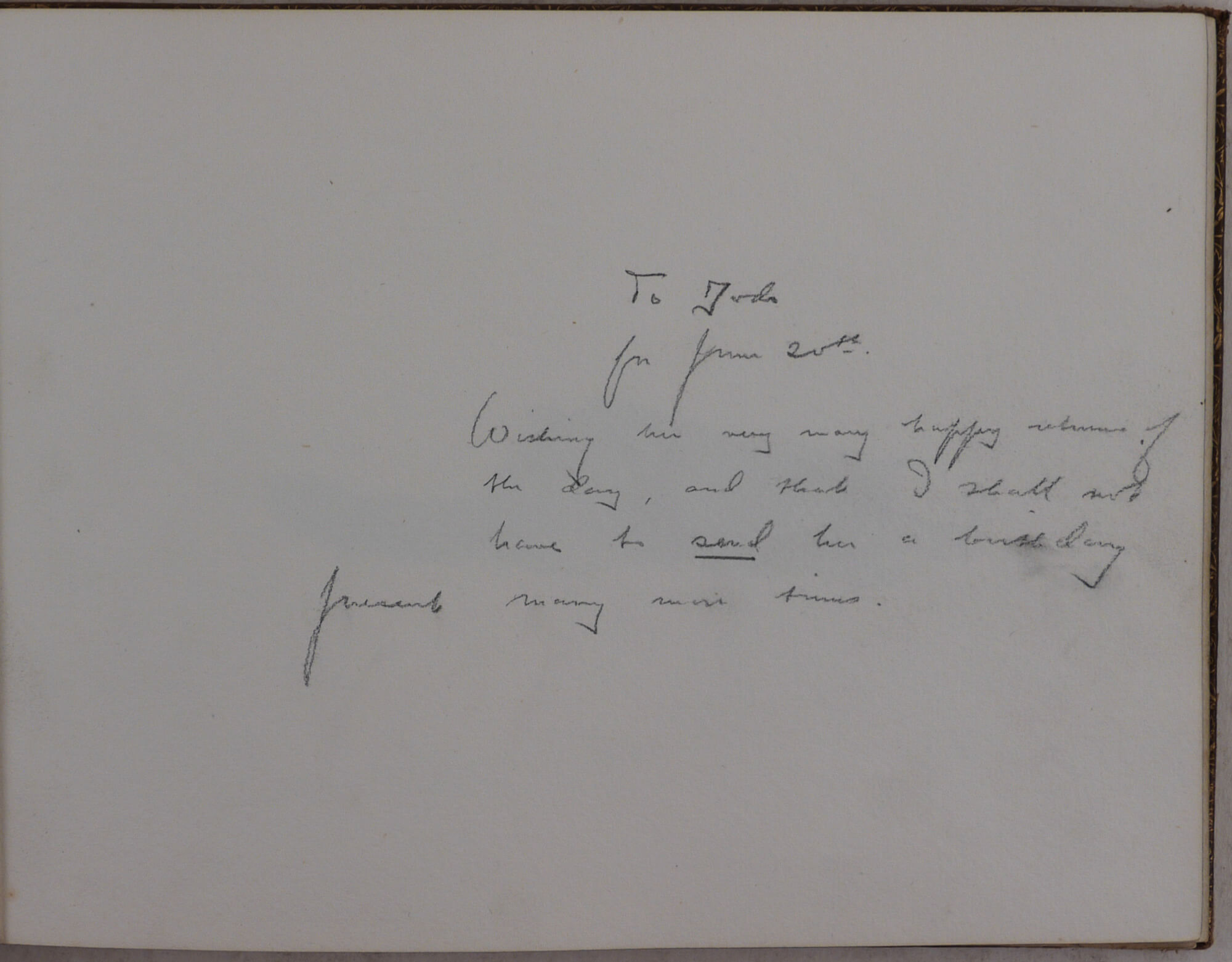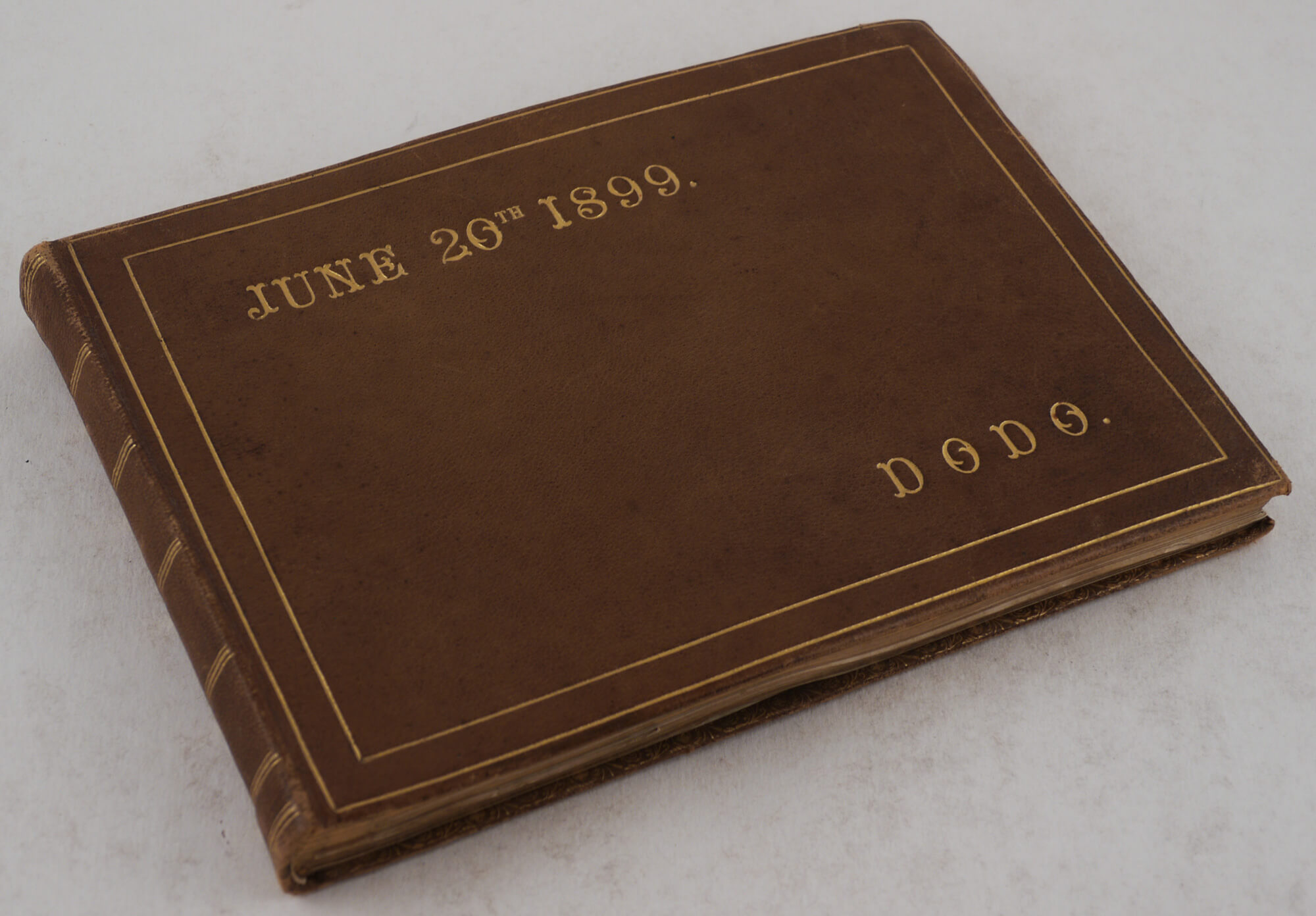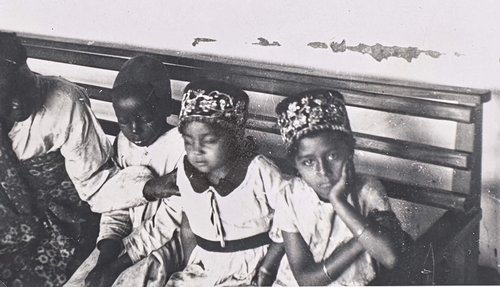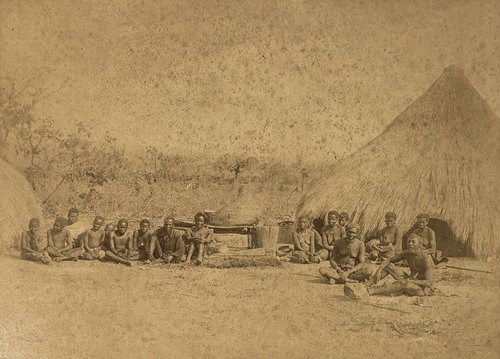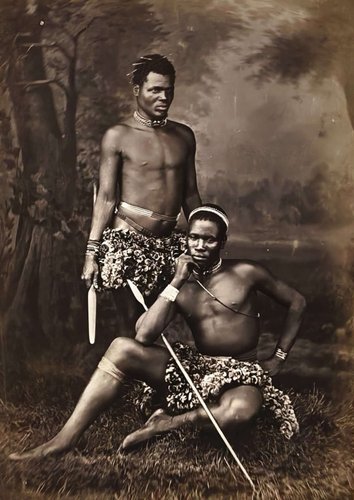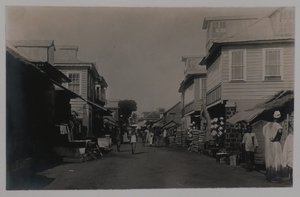



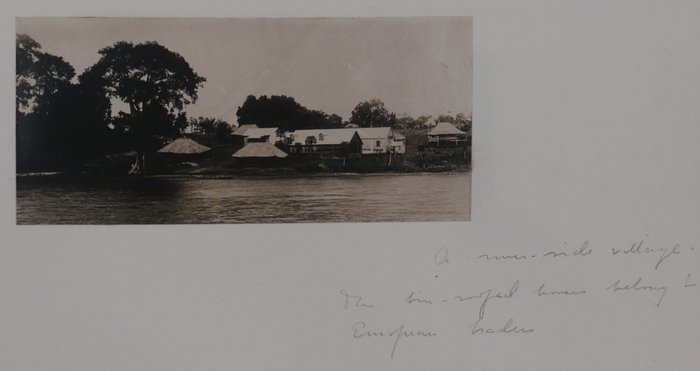
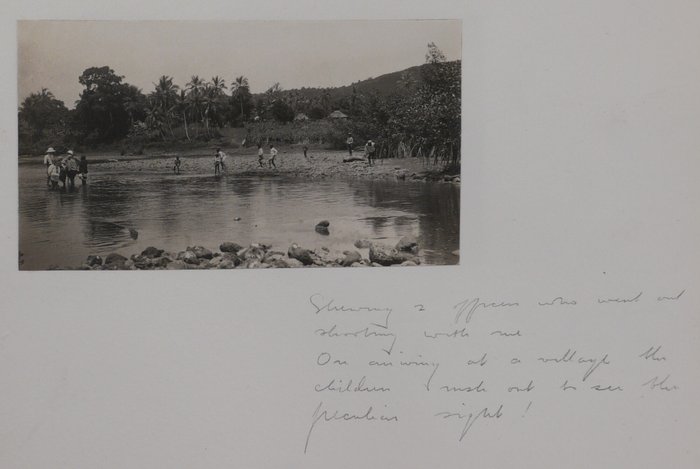
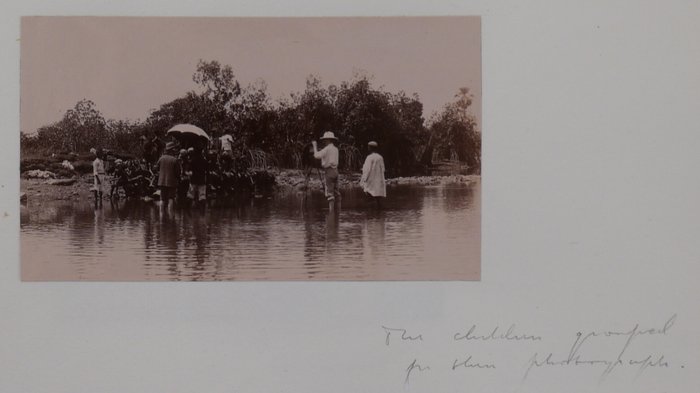
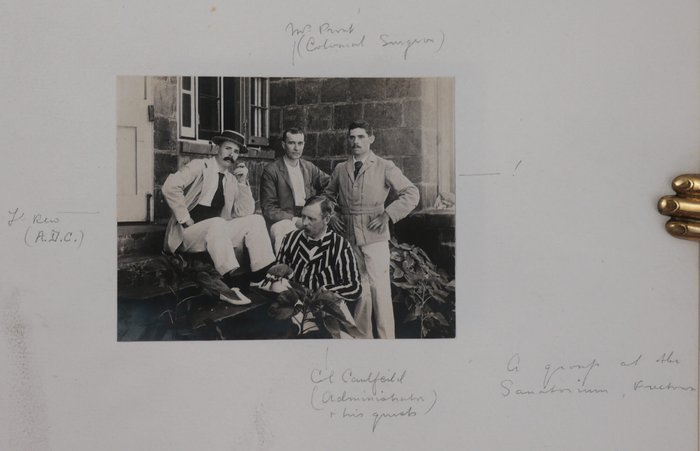
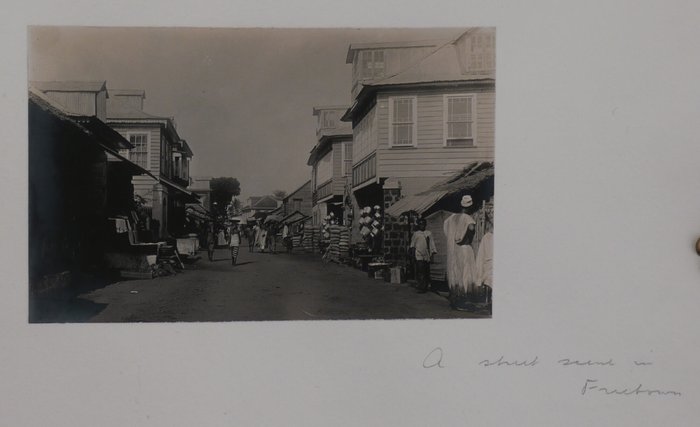
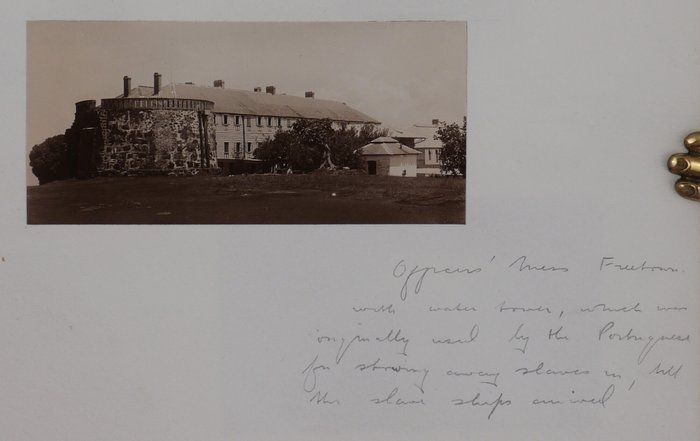
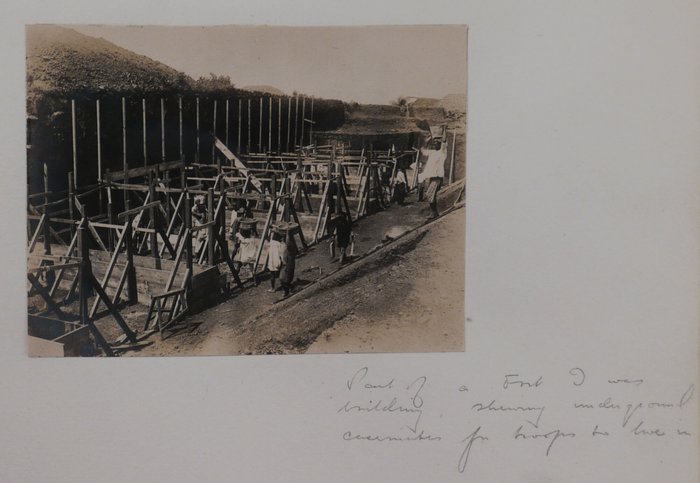
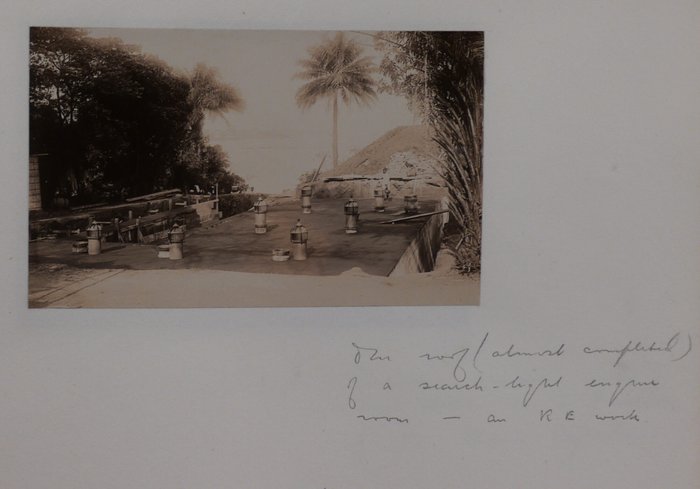
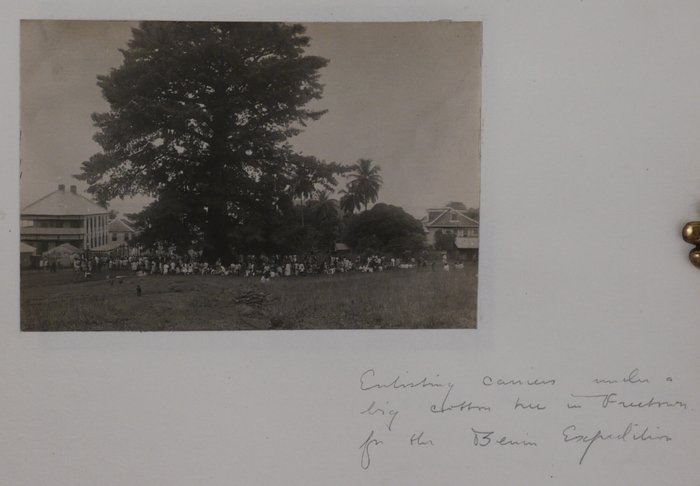
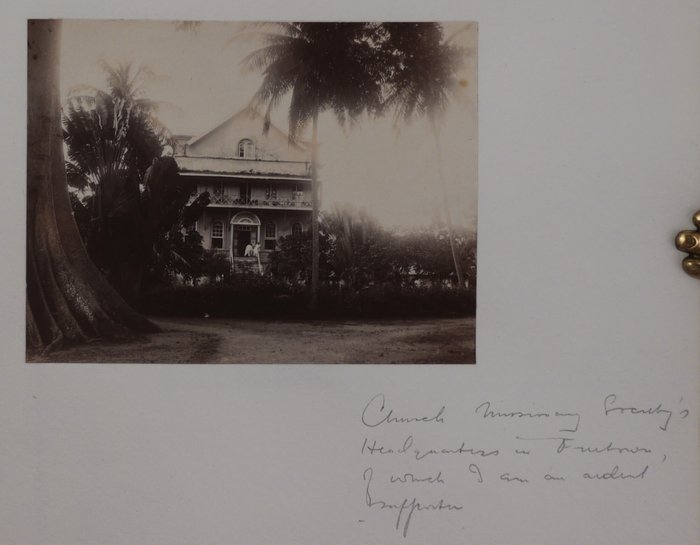
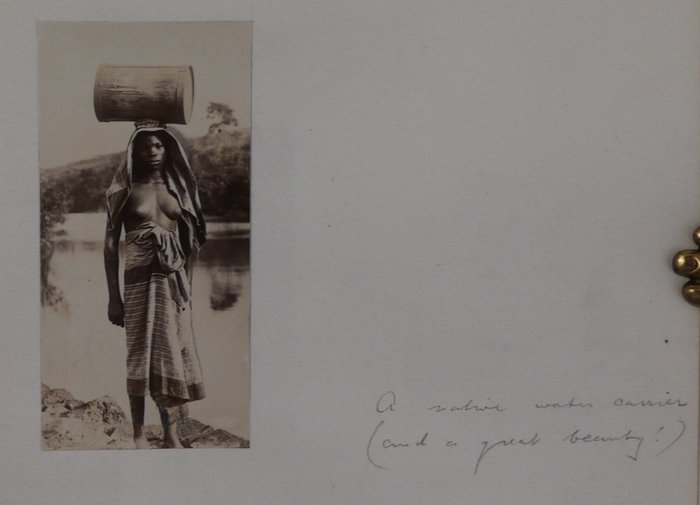

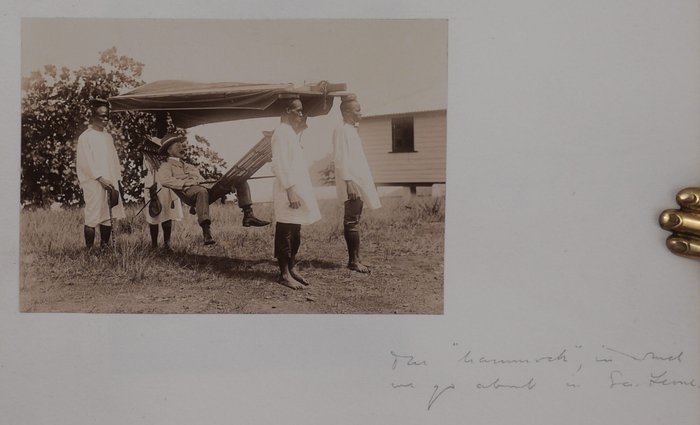
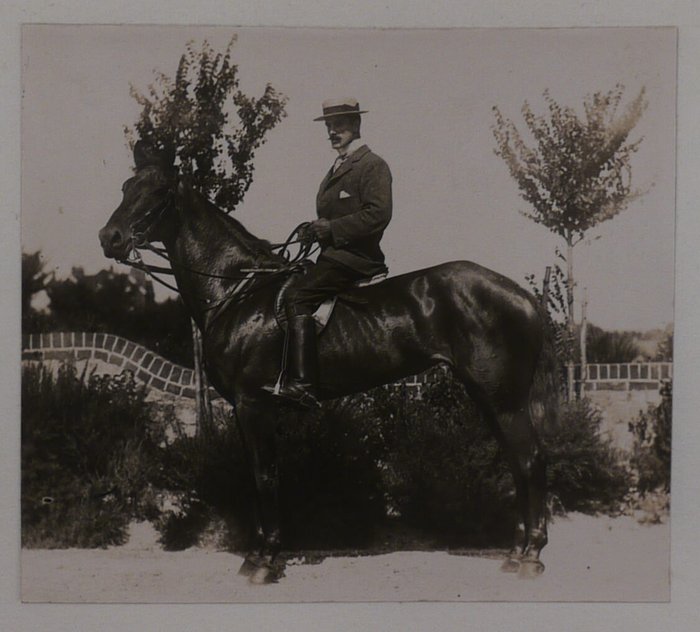
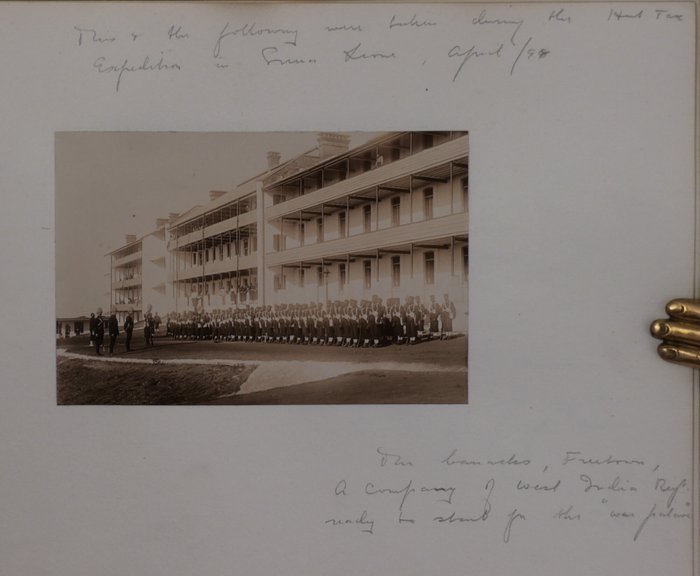
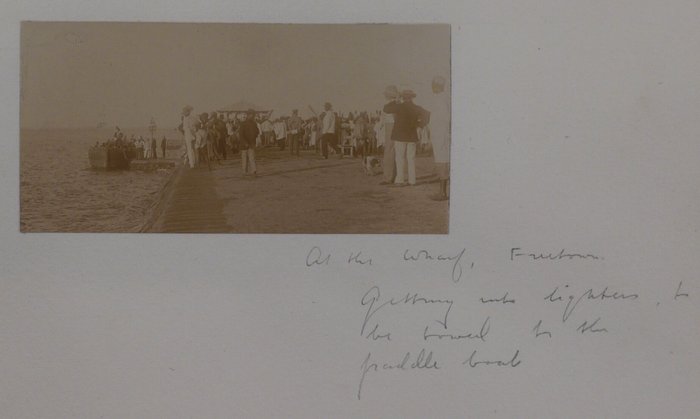
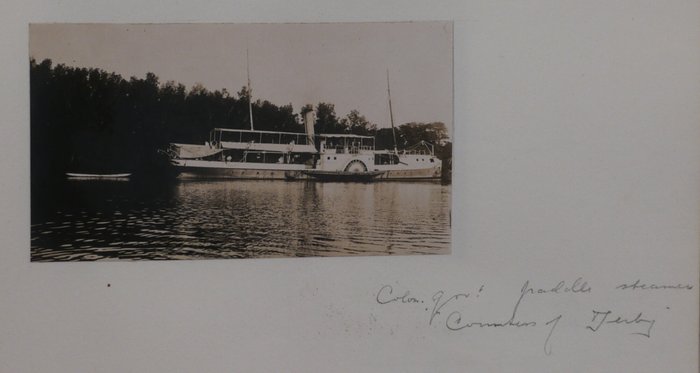
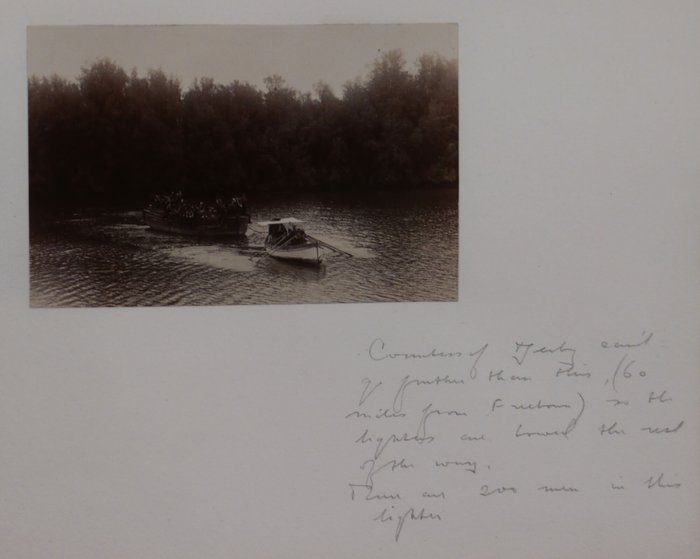
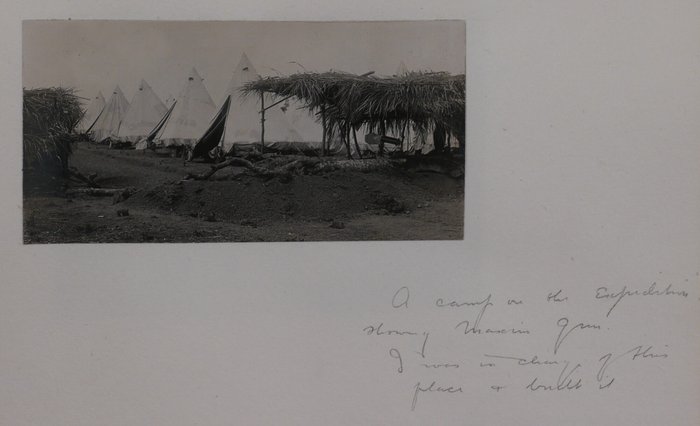
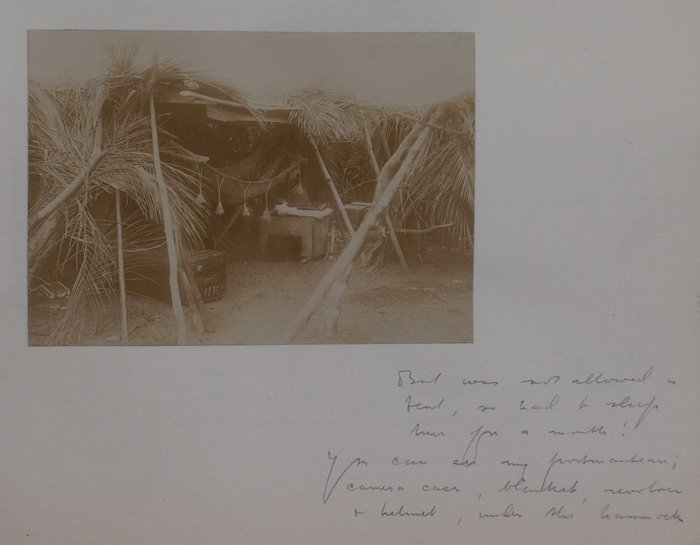
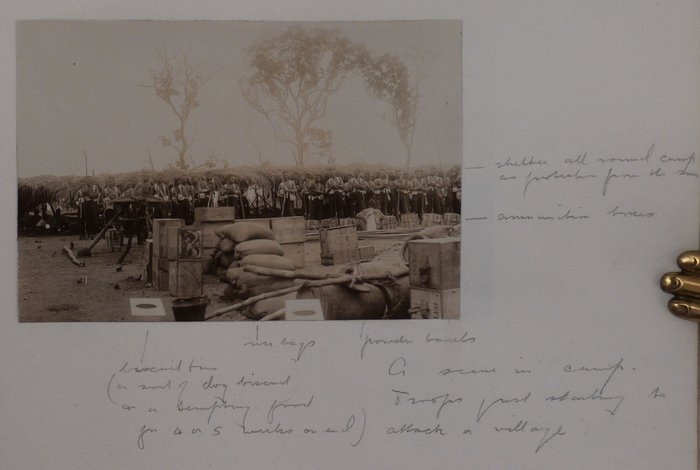
.jpg.700x700_q85_autocrop_replace_alpha-%23FFFFFF.jpg)

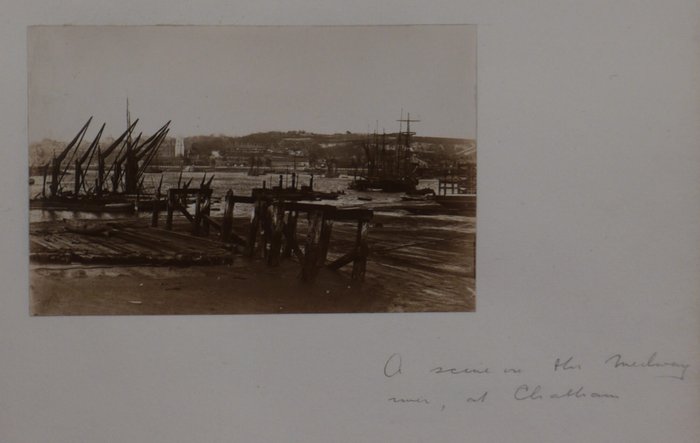
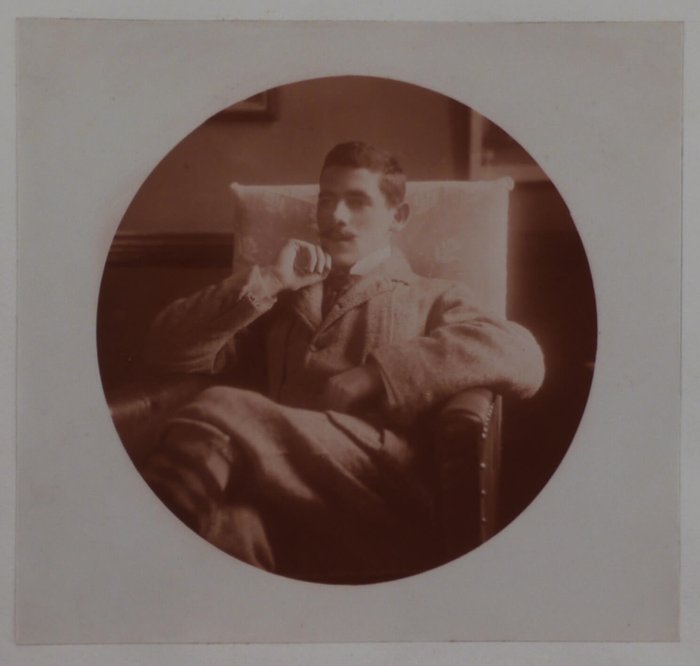

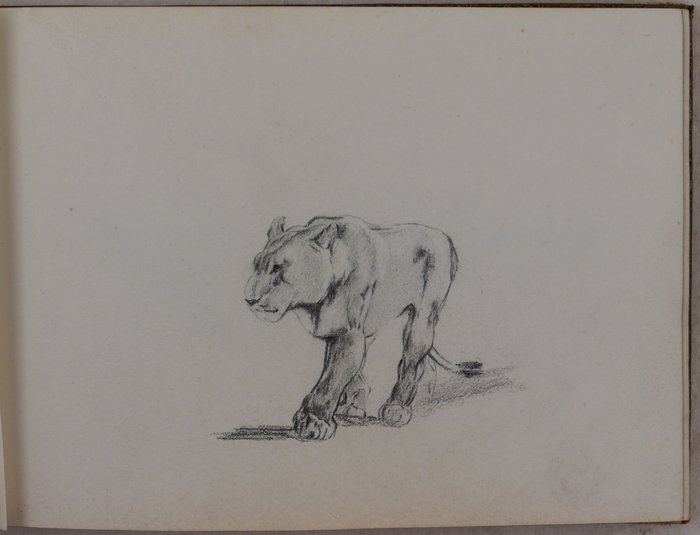
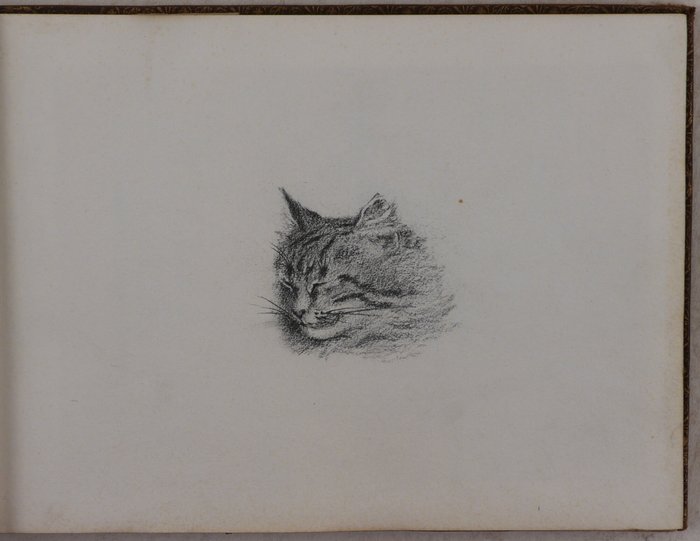
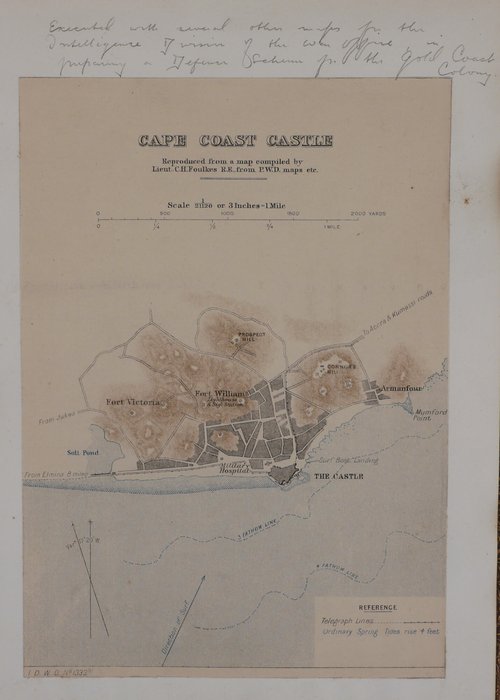

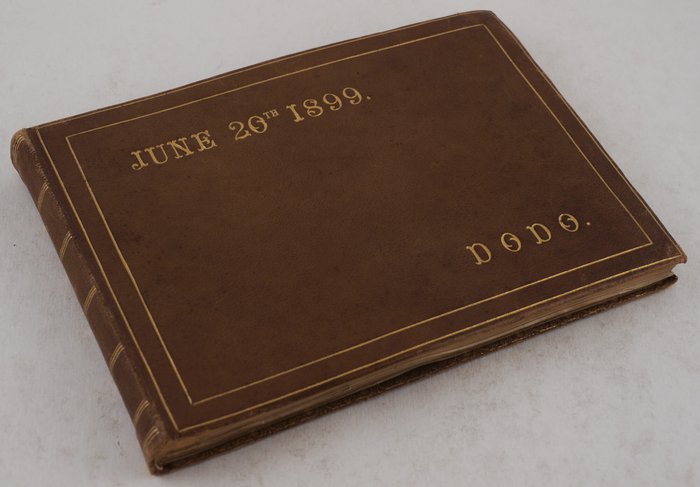
#P86
Ca. 1898-1899
Oblong Small Quarto album (ca. 18,5x25 cm). 51 leaves. With 46 mounted gelatin silver snapshot photographs, from ca. 11,5x12 cm (4 ½ x 4 ¾ in) to ca. 3,5x4,5 cm (1 ¼ x 1 ¾ in), most photos are ca. 7,5x11 cm (3 x 4 ¼ in). With a mounted lithographed plan of the Cape Coast Castle ca. 14x20 cm (5 ½ x 7 ¾ in). All but five private photos with period pencil captions on the mounts. Pencil dedication inscription on the second leaf. Period light brown full morocco album with a gilt-lettered dedication “June 20th, 1899, Dodo” on the front board. Marbled endpapers, all edges gilt. A couple of images mildly faded, but overall a beautiful keepsake album in near fine condition with interesting photographs.
Historically significant collection of rare early amateur photos of Sierra Leone, taken by British officer Charles Howard Foulkes. He commissioned into the Army as 2nd Lt. in the Royal Engineers and served in Sierra Leone in 1897-1899, where he supervised the construction of Freetown’s coastal defence infrastructure and took part in the Hut Tax War (1898-99) against the Temne people in the north of the country. In 1899-1900, he served during the Second Boer War, when he organized a photographic reconnaissance section; in 1902-1904, Foulkes was an officer of the Anglo-French Boundary Commission. He is mostly known as Britain’s chief advisor on gas warfare (1915) and the director of the controversial Gas Services (1917). Foulkes was an avid amateur photographer, and his images of the Hut Tax War became an important early example of conflict photography.
Our album was specially bound and presented to Foulkes’ bride and future wife (since 1904) Dorothea Fanny Oakey (1880-1967). She was born on June 20th, and the elegant gilt-lettered dedication on the front board reads “Dodo, June 20th 1899.” Foulkes’ inscription on the second leaf says: “To Dodo for June 20th. Wishing her very many happy returns of the day, and that I shall not have to send her a birthday present many more times.”
The album contains over twenty carefully selected views and scenes of Freetown and environs, aimed to give an overview of Foulkes’ life in Sierra Leone. Interesting images show “part of a fort I was building, showing underground casemates for troops to live in”; “the roof (almost completed) of a search-light engine room – an R.E. work”; “Church Missionary Society Headquarters in Freetown of which I am an ardent supporter”; a street scene, fishing villages on the “Port Lokko Creek” (Bankasoka River), “a riverside village, the tin-roofed houses belong to European traders”; “the “hammock,” in such we go about in Sierra Leone”, etc.; there are also several portraits of the native people of Sierra Leone.
Nine photos taken during the Hut Tax War have a general manuscript caption, reading: “this & the following were taken during the Hut Tax Expedition in Sierra Leone, April 1899.” The photos show a review of a company of West Indian Regiment in Freetown, the paddle steamer “Countess of Derby” and lighters which took the troops up the river, a military camp “showing Maxim gun, I was in charge of this place & built it”; Foulkes’ camp dwelling with his “portmanteau [marked “C.H.F.”], camera case, blanket, revolver & helmet”; “a scene in camp, troops just starting to attack a village”; a native village destroyed by shells and burned (a vivid example of British scorched-earth policy during the campaign), and a scene with “the convoy accompanying troops.”
Foulkes himself presents on at least three or four photos. A portrait of “a group at the Sanatorium, Freetown” shows him posing with Col. J.E. Caulfield (acting Governor of Sierra Leone for three terms in 1895-1900), Caulfield’s A.D.C., and Sir William Prout (1862-1939) - principal medical officer and official member of the Legislative Consul of Sierra Leone in 1895-1906. A scene in a riverside village depicts him taking a portrait of native children “grouped for the photograph.” The uncaptioned photo on the last leaf is obviously his portrait, and one of the uncaptioned photos taken in England, likely also depicts him mounted on a horse. The album additionally contains ten private photos taken in England and showing Foulke’s relatives, the Medway River and the Royal Engineers observatory in Chatham. The drawings are leisurely but skillful pencil sketches of two house cats, a lioness, and a tree branch. The lithographed plan of the Cape Coast Castle, “reproduced from a map compiled by Lieut. C.H. Foulkes from P.W.D. maps etc.” has a pencil commentary on the mount “Executed with several other maps for the intelligence of mission[?] of the War Office in preparing a Defence Scheme for the Gold Coast Colony”. Overall a rare important collection of early photos of Sierra Leone and military operations during the Hut Tax War.
A list of captions: A typical W. African village scene (Sierra Leone); River scene, Sierra Leone, my hammock boy thrown into the water to make ripples; A scene 4 miles from Freetown; River scene near Freetown; A fishing village on the river about 60 miles up the Port Lokko Creek (i.e. the Freetown river); River scene showing extraordinarily high mangrove trees; A riverside village, the tin-roofed houses belong to European traders; Typical river scene, the mangrove bushes grow like this for miles, on both sides of the river & are very unhealthy; Fishing village; Mountain stream near Freetown; Showing 2 officers who went out shooting with me. On arriving at a village the children rush out to see the peculiar sight!; The children grouped for the photograph; A group at the Sanatorium, Freetown: Col. Caulfield (Administrator & his guest), J. Kew[?] (A.D.C.), Mr. Prout (Colonial Surgeon), [the album’s compiler]; A street scene in Freetown; Officers’ Mess, Freetown, with water tower, which was originally used by the Portuguese for stowing away slaves in, till the slave ships arrived; Part of my household: Sambo, my servant, a thief, liar, etc. etc., “Daddy Puss,” “Piccin Puss,” a most important member of the family; Part of a fort I was building, showing underground casemates for troops to live in; The roof (almost completed) of a search-light engine room – an R.E. work; Enlisting carriers under a big cotton tree in Freetown for the Benin Expedition; Church Missionary Society Headquarters in Freetown of which I am an ardent supporter; A native water carrier (and a great beauty!); A “Piccin” looking over the side of a bridge at some bathers; The “hammock,” in such we go about in Sierra Leone; My cousins at Bedford – […?]; Laura; Rita; The Prices’ house; The hotel at the Devil’s Dyke, Brighton; This & the following were taken during the Hut Tax Expedition in Sierra Leone, April 1899, The barracks, Freetown, a company of West Indian Regt. ready to stand for the “war …?”; At the wharf, Freetown, getting into lighters to be towed to the paddle boat; Colonial Govt. paddle steamer Countess of Derby; Countess of Derby can’t go further than this (60 miles from Freetown), so the lighters are rowed the rest of the way. There are 200 men in this lighter; A camp on the Expedition, showing Maxim gun, I was in charge of this place & built it; But was not allowed a tent, so had to sleep here for a month! You can see my portmanteau, camera case, blanket, revolver & helmet, under the hammock; A scene in camp. Troops just starting to attack a village: biscuit tins (a sort of day biscuit & a … food for 4 or 5 weeks on end), rice bags, powder barrels, shelter all round the camp as protection from the sun, ammunition boxes; The village after attack. It has been shelled, assaulted & set on fire, & this is what is left; The convoy accompanying troops. The hammocks are for the wounded. This is just outside the camp, where the “bush” has been cut down; A scene on the Medway River at Chatham; The R.E. Observatory at Chatham, the Gymnasium in the distance on the left.


